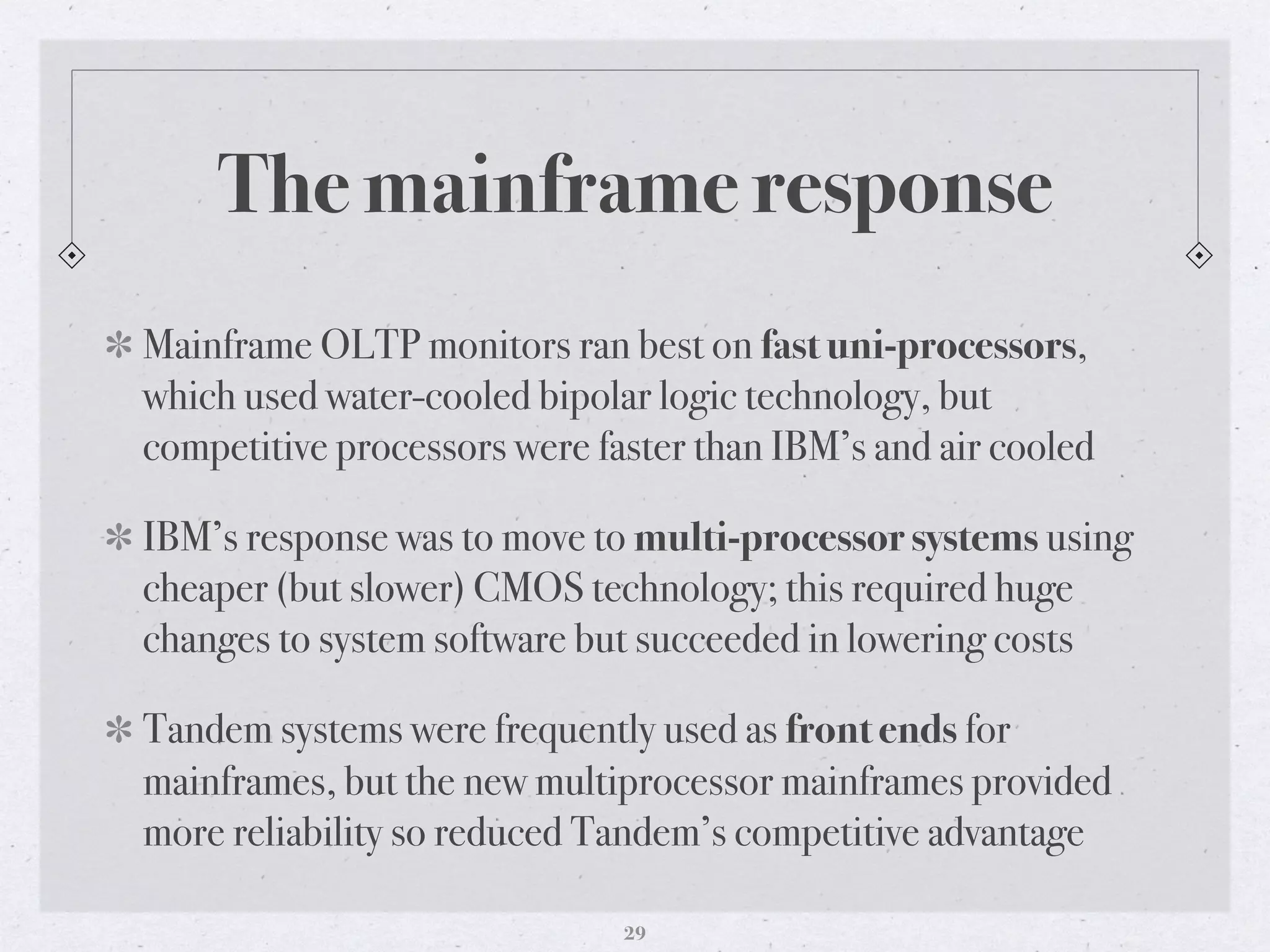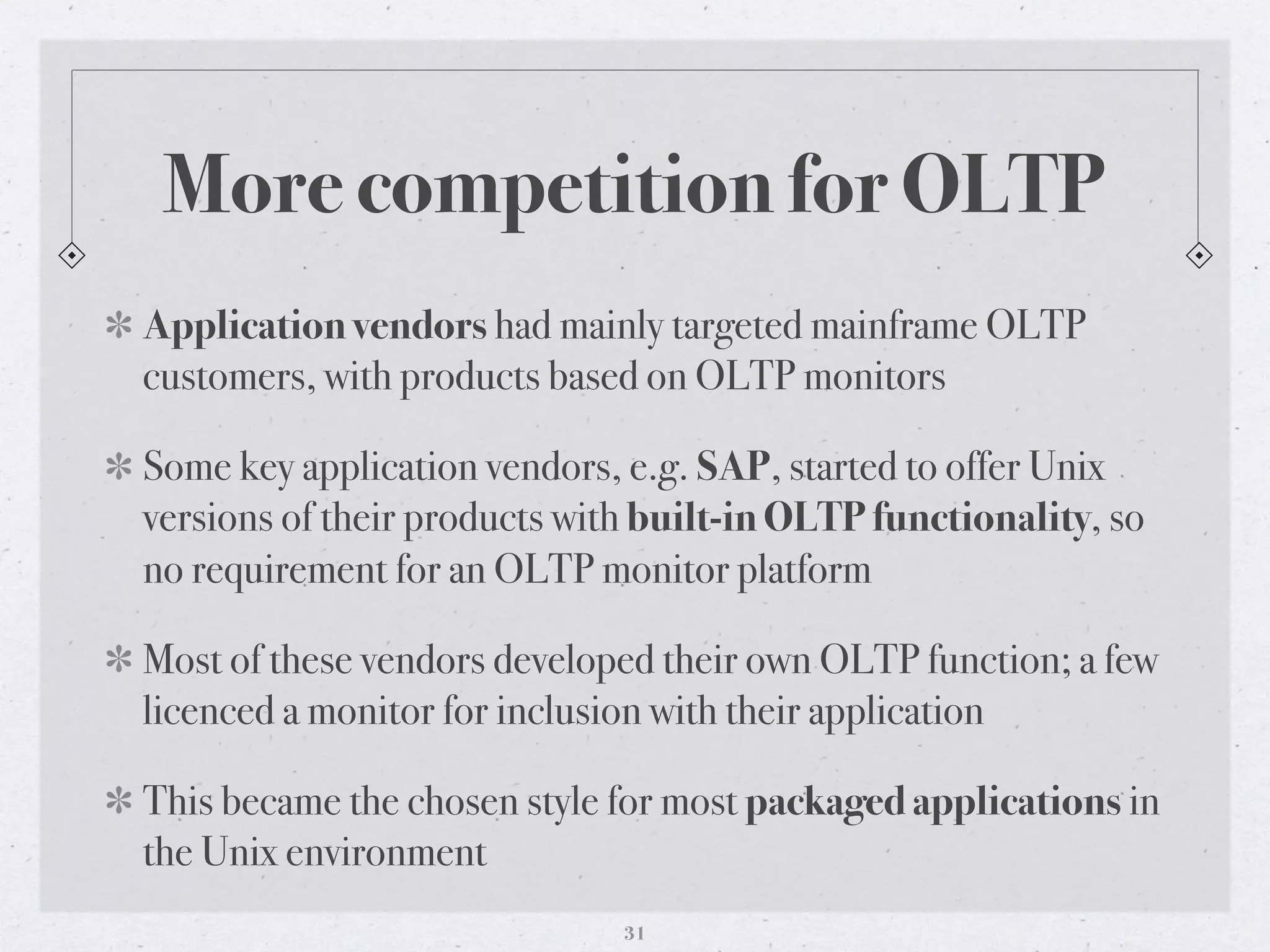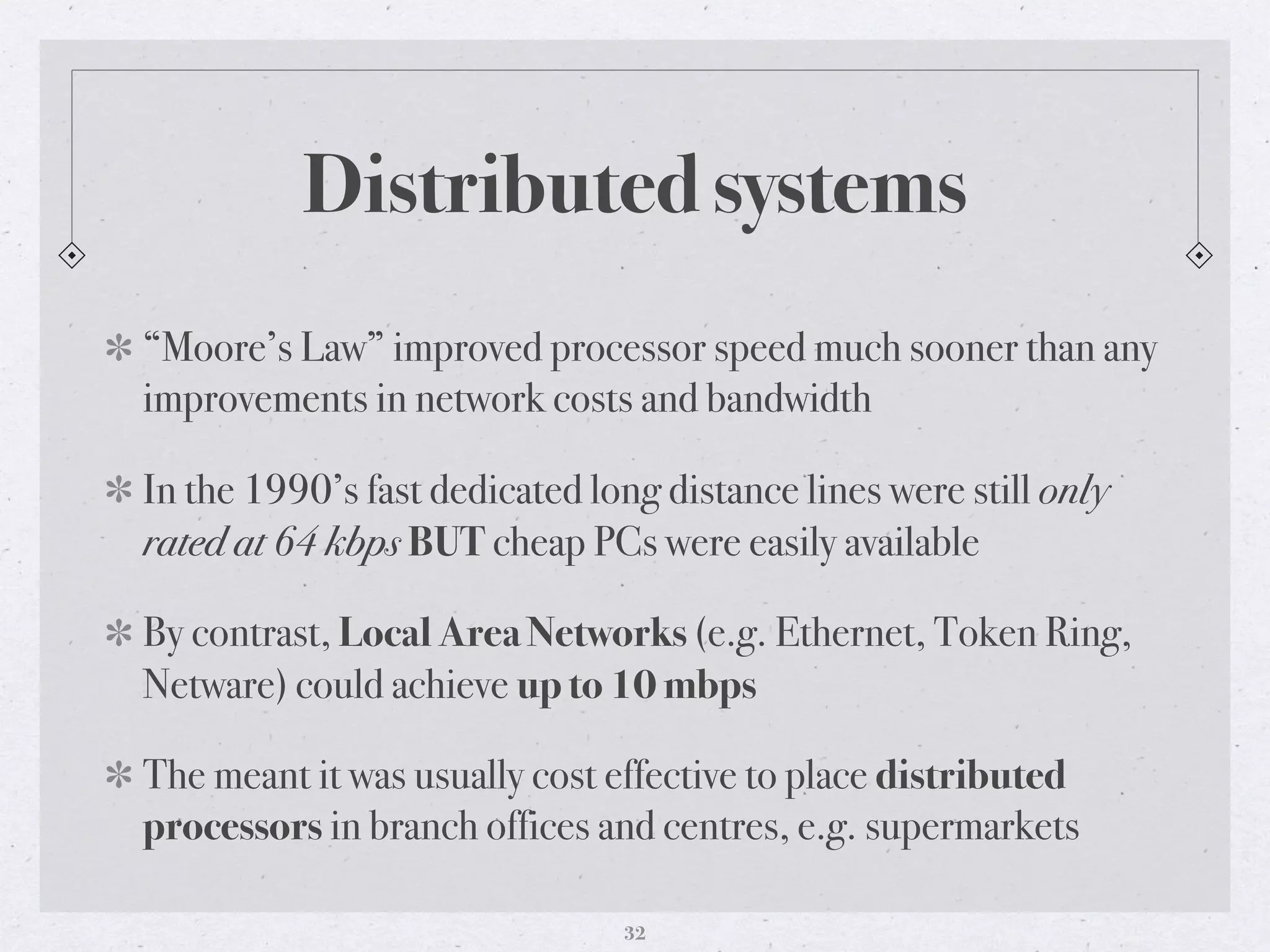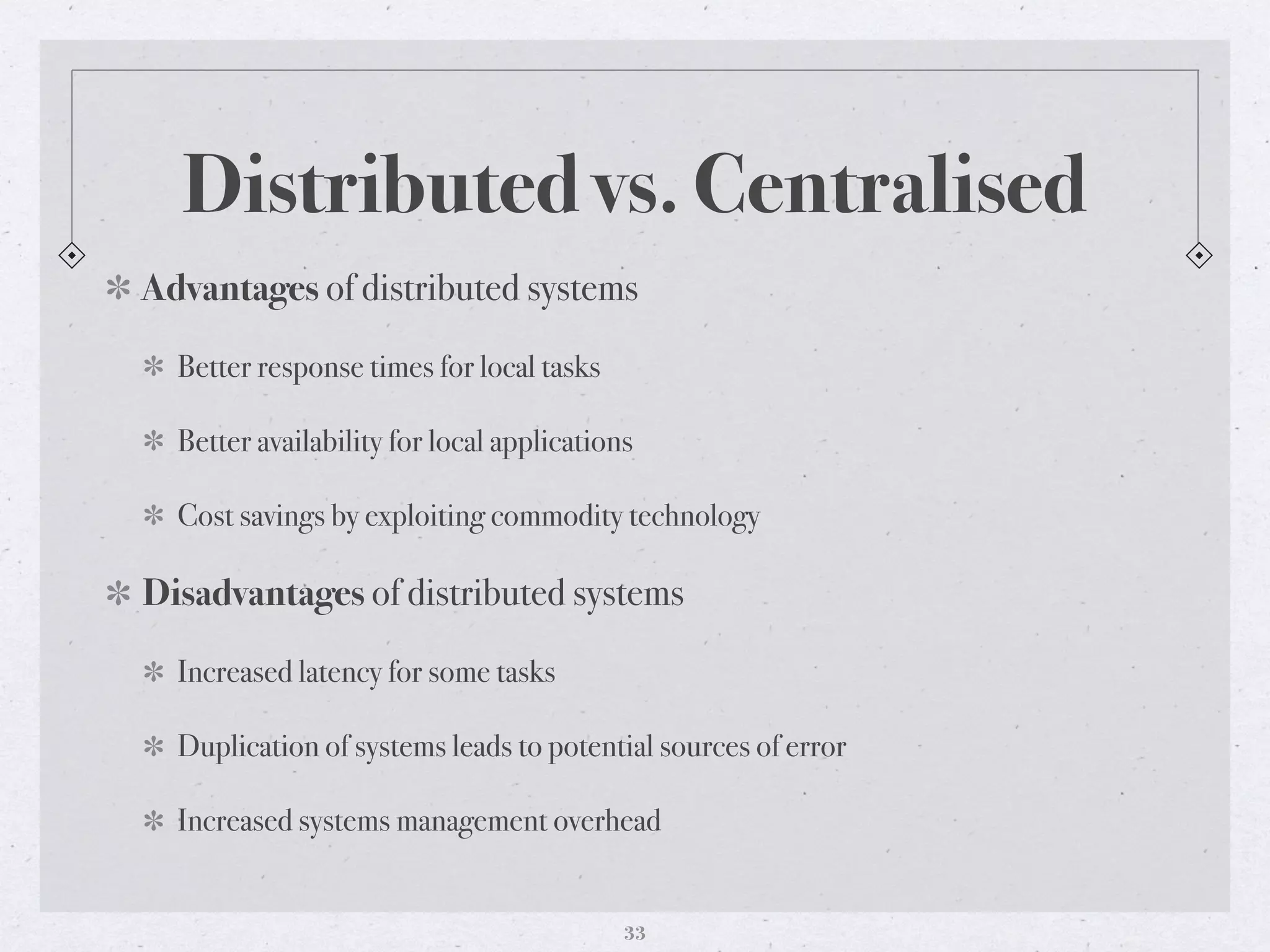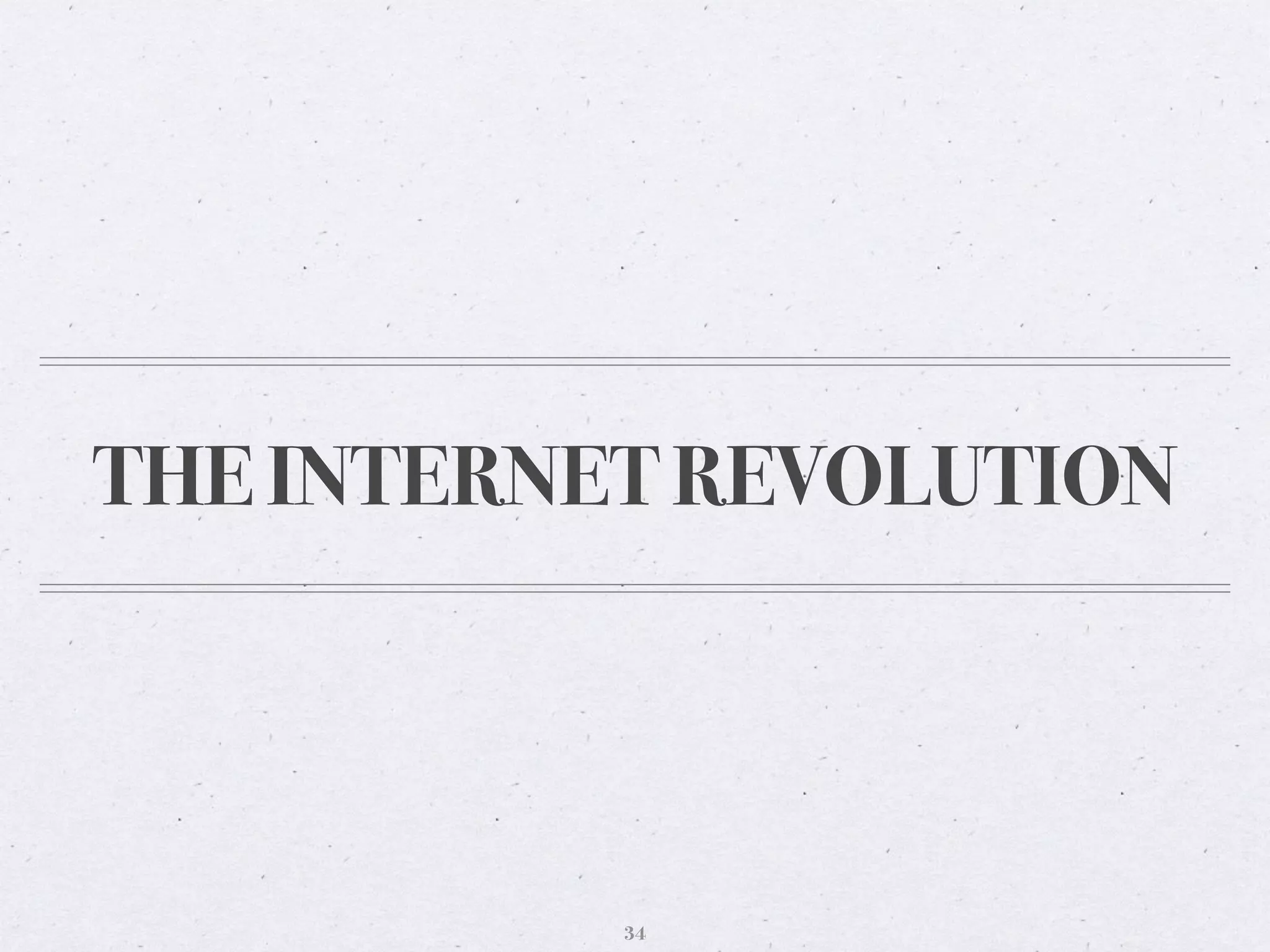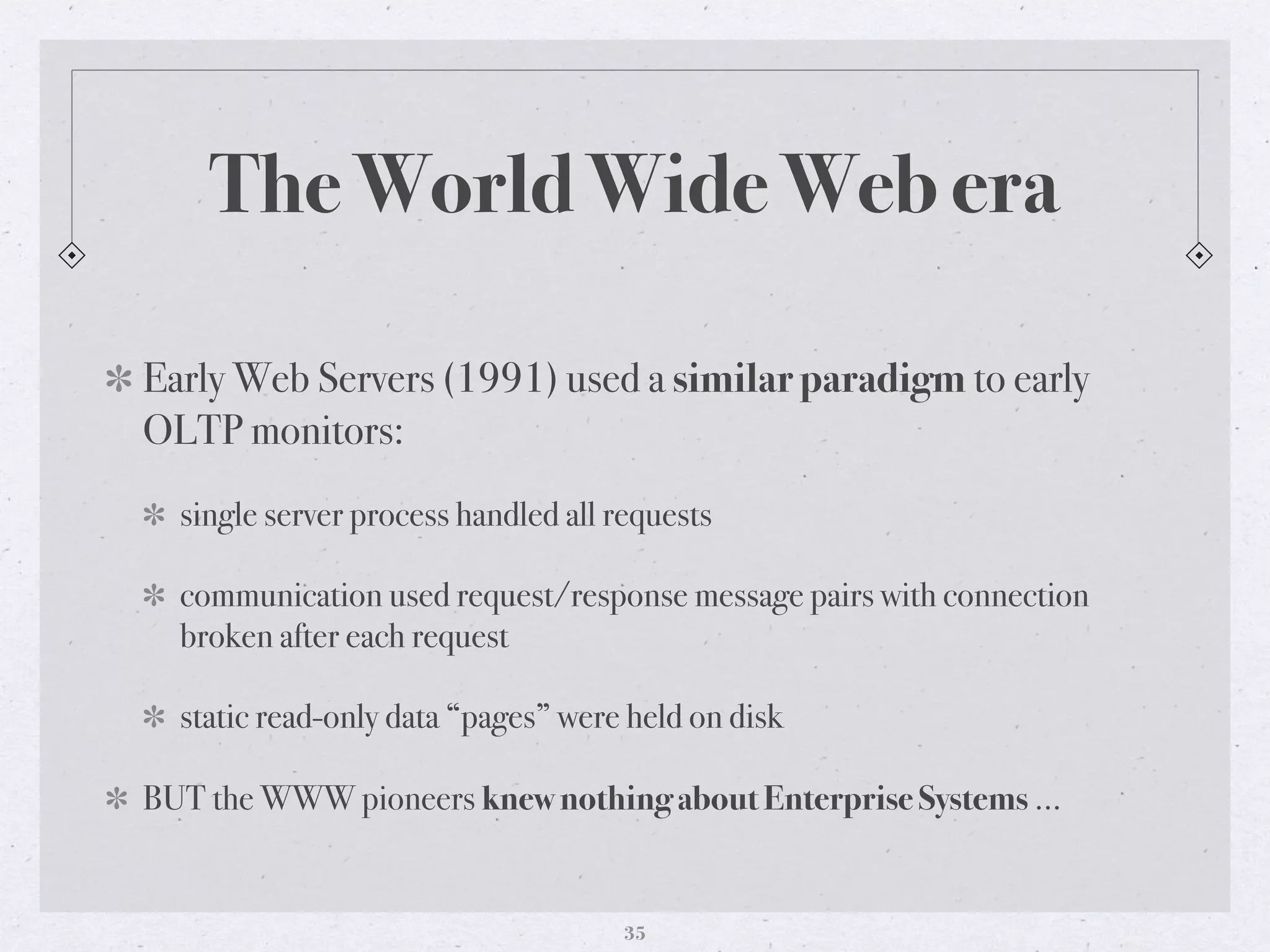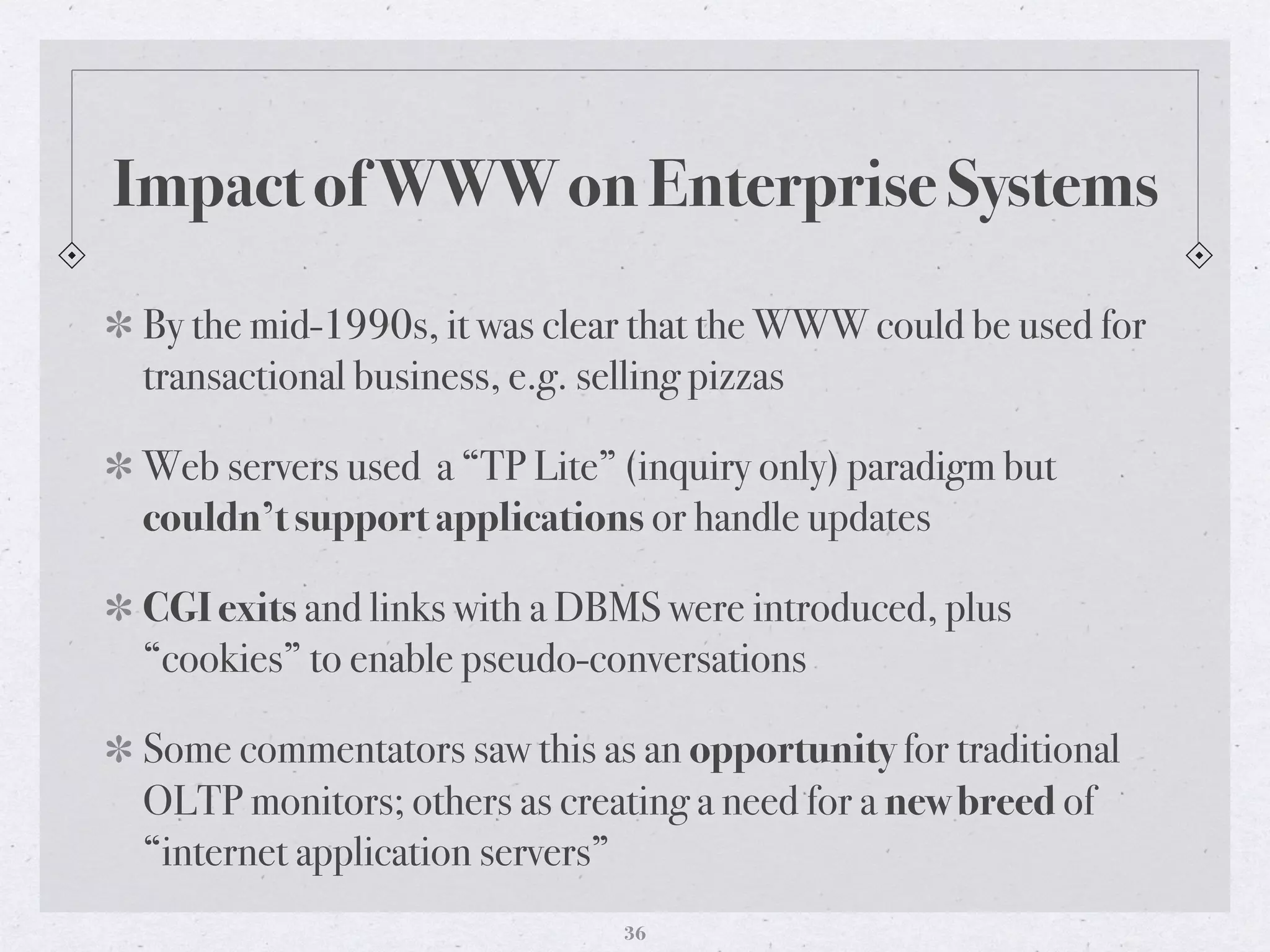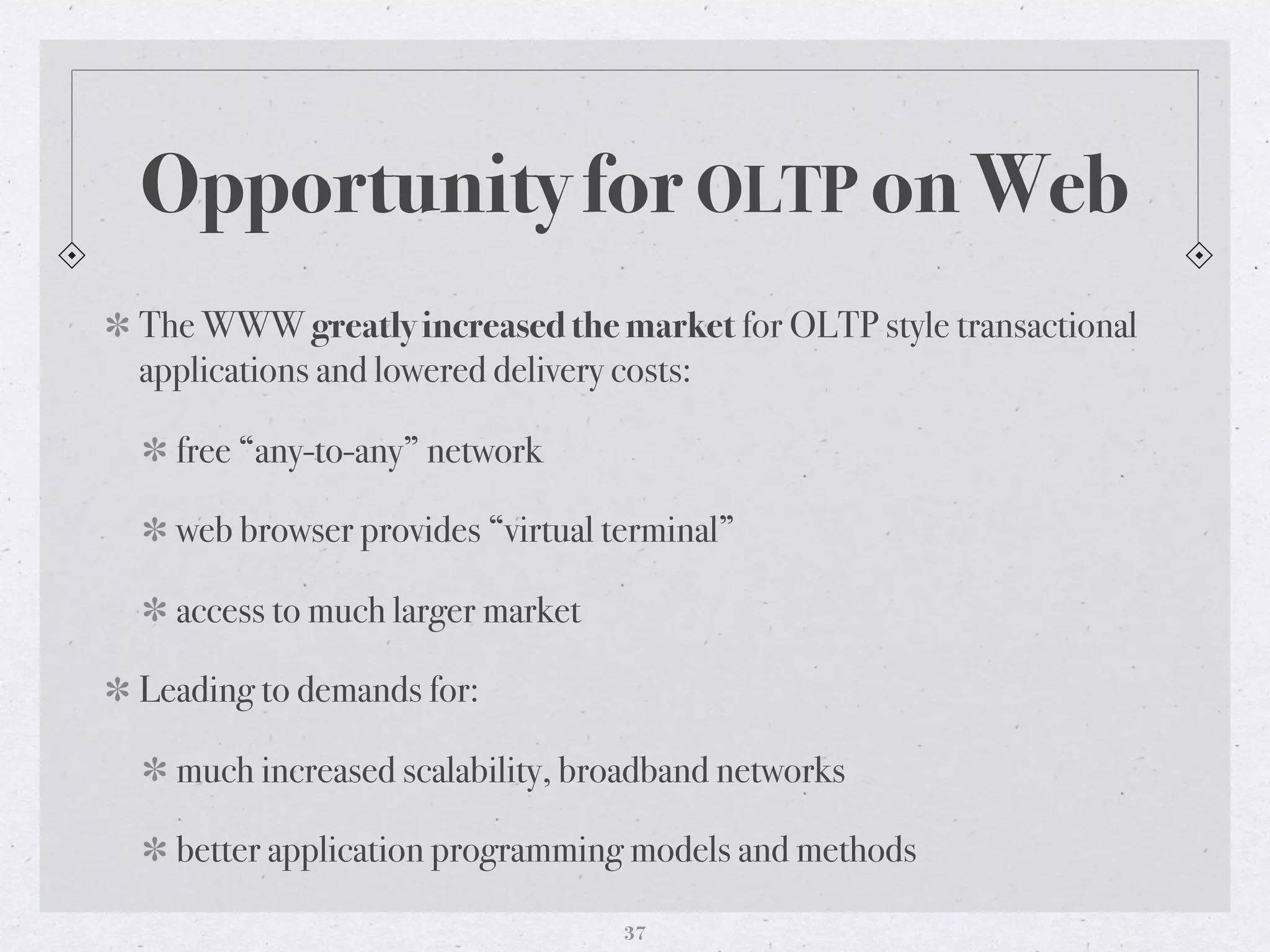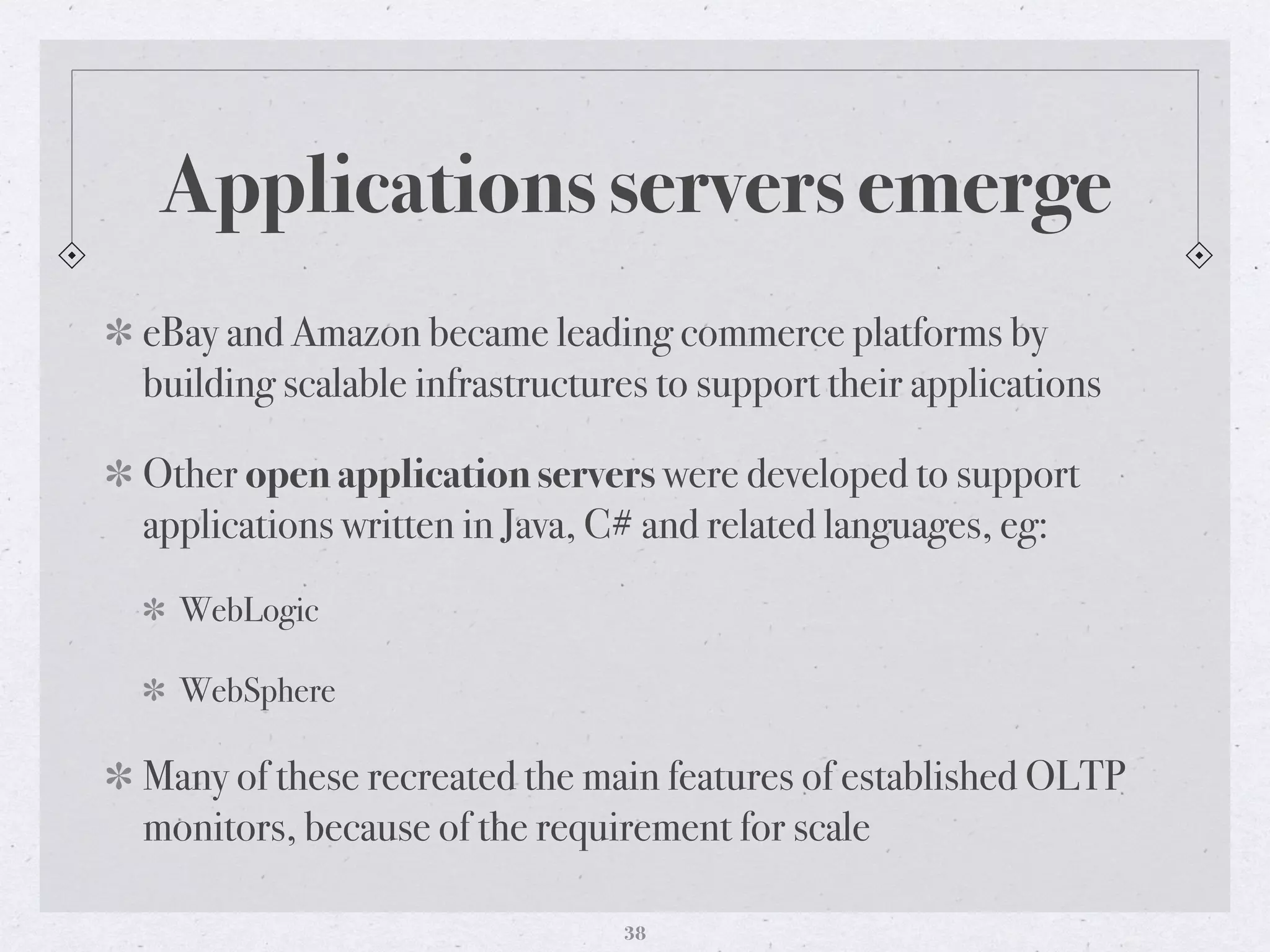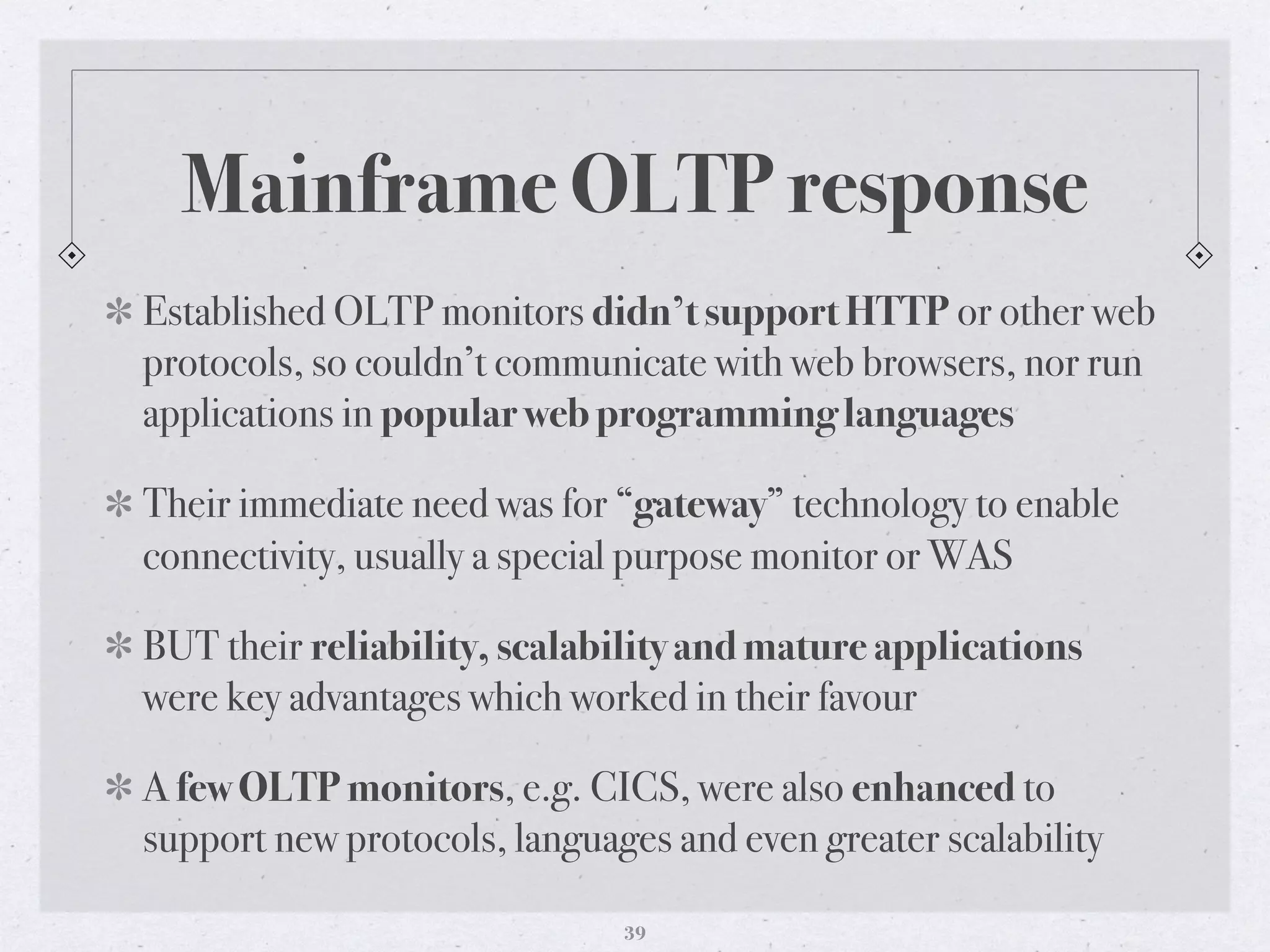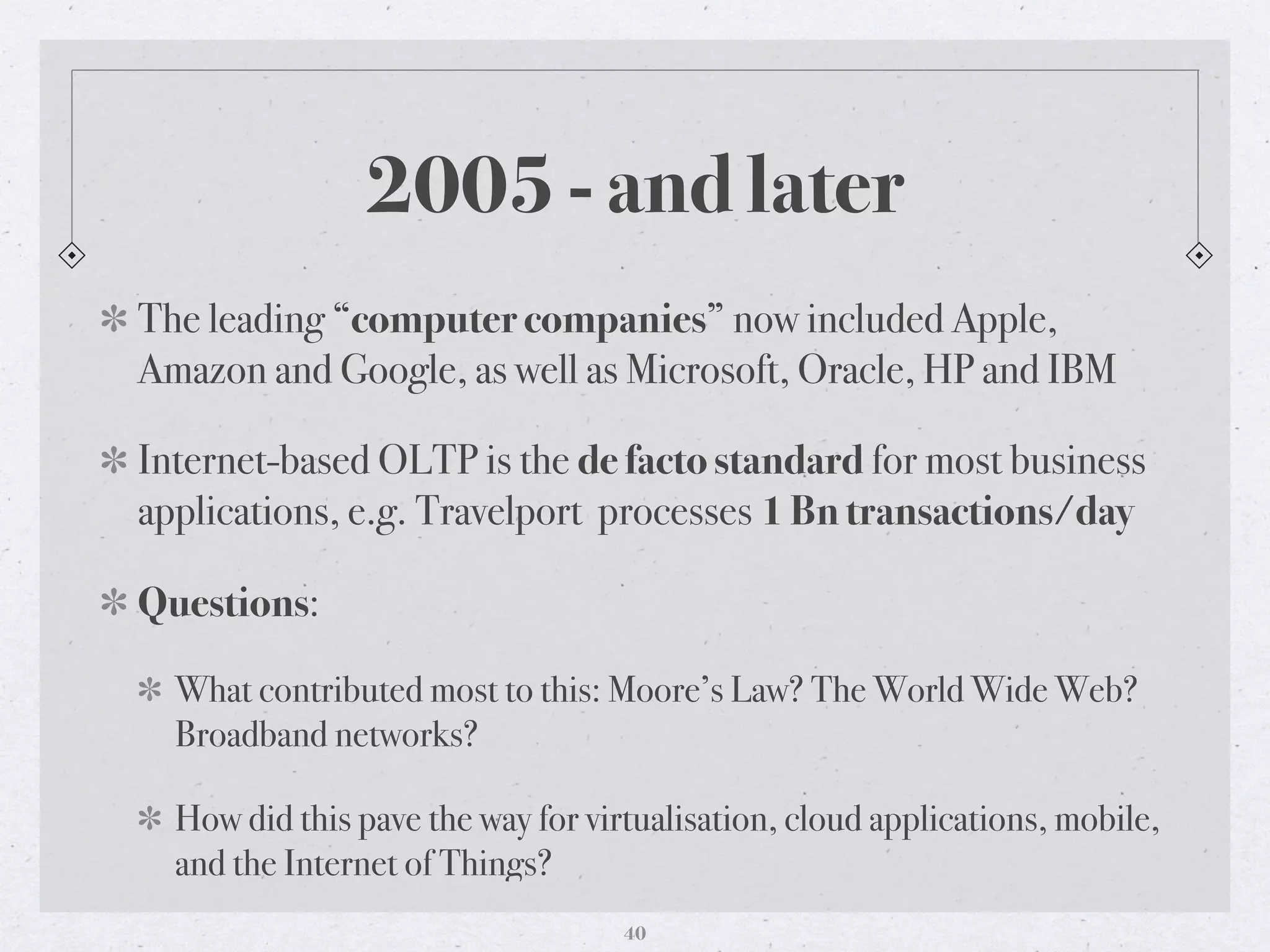The document summarizes the evolution of enterprise systems from 1965 to 2005. In 1965, IBM introduced the first online transaction processing (OLTP) system for airline reservations, marking a shift from batch processing to real-time systems. Early OLTP systems faced challenges from slow hardware and software that was not designed for concurrent transactions. This led to the development of database management systems, data communication systems, and OLTP monitors to support the new paradigm. By 2005, thanks to exponential improvements from Moore's law, the internet, and new application servers, OLTP had become the dominant form of enterprise computing, processing billions of transactions daily on a global scale.
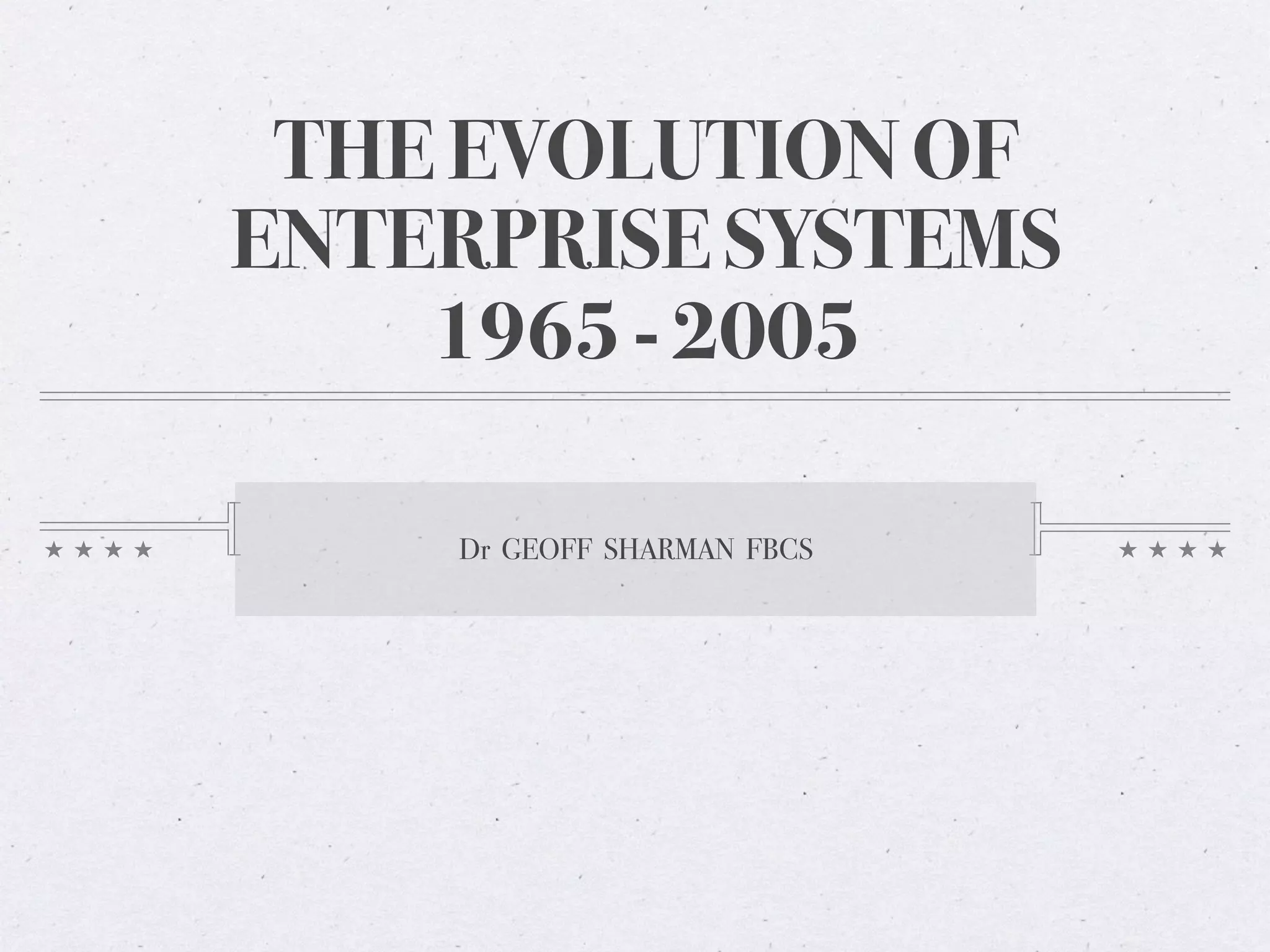

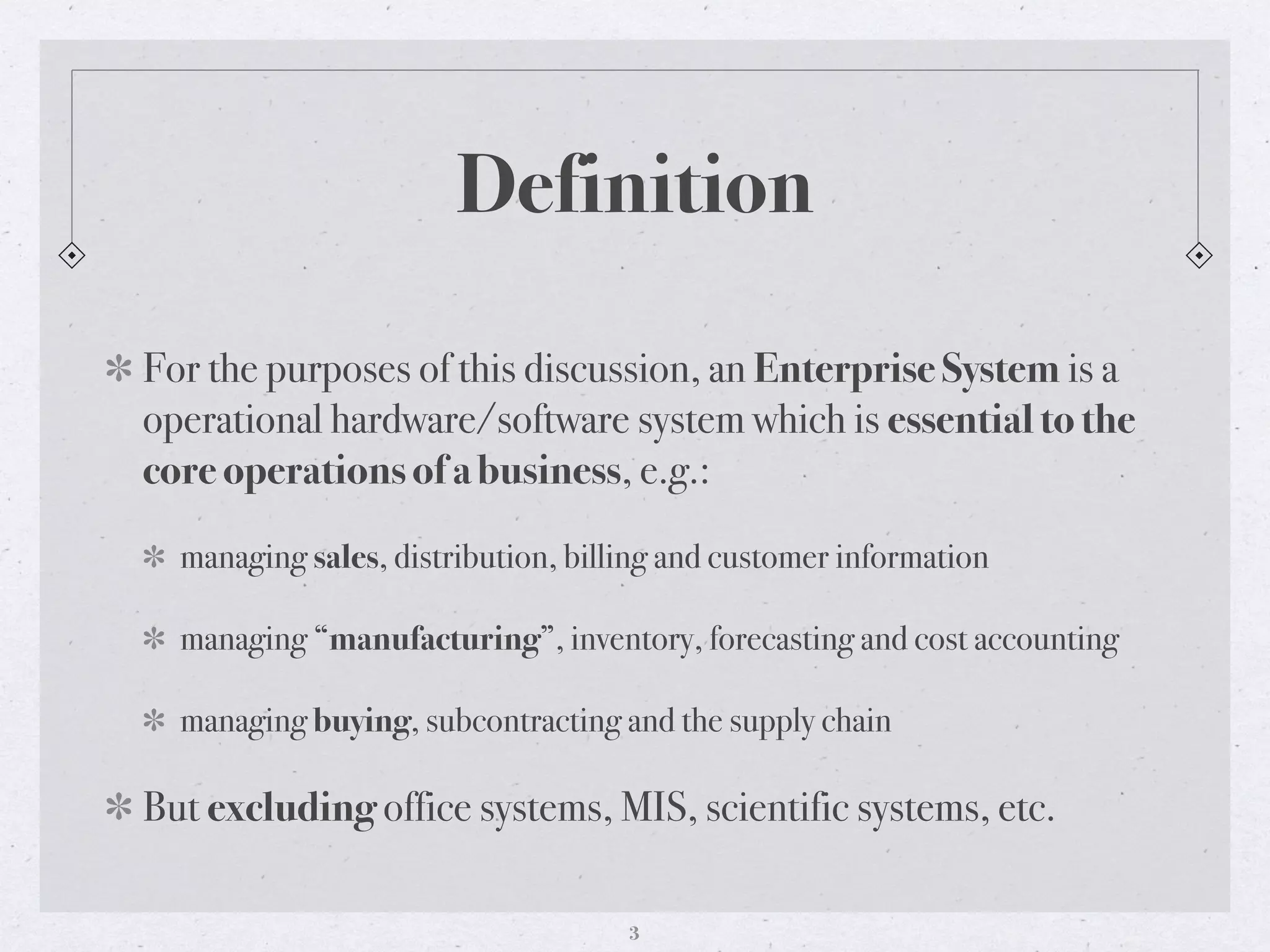

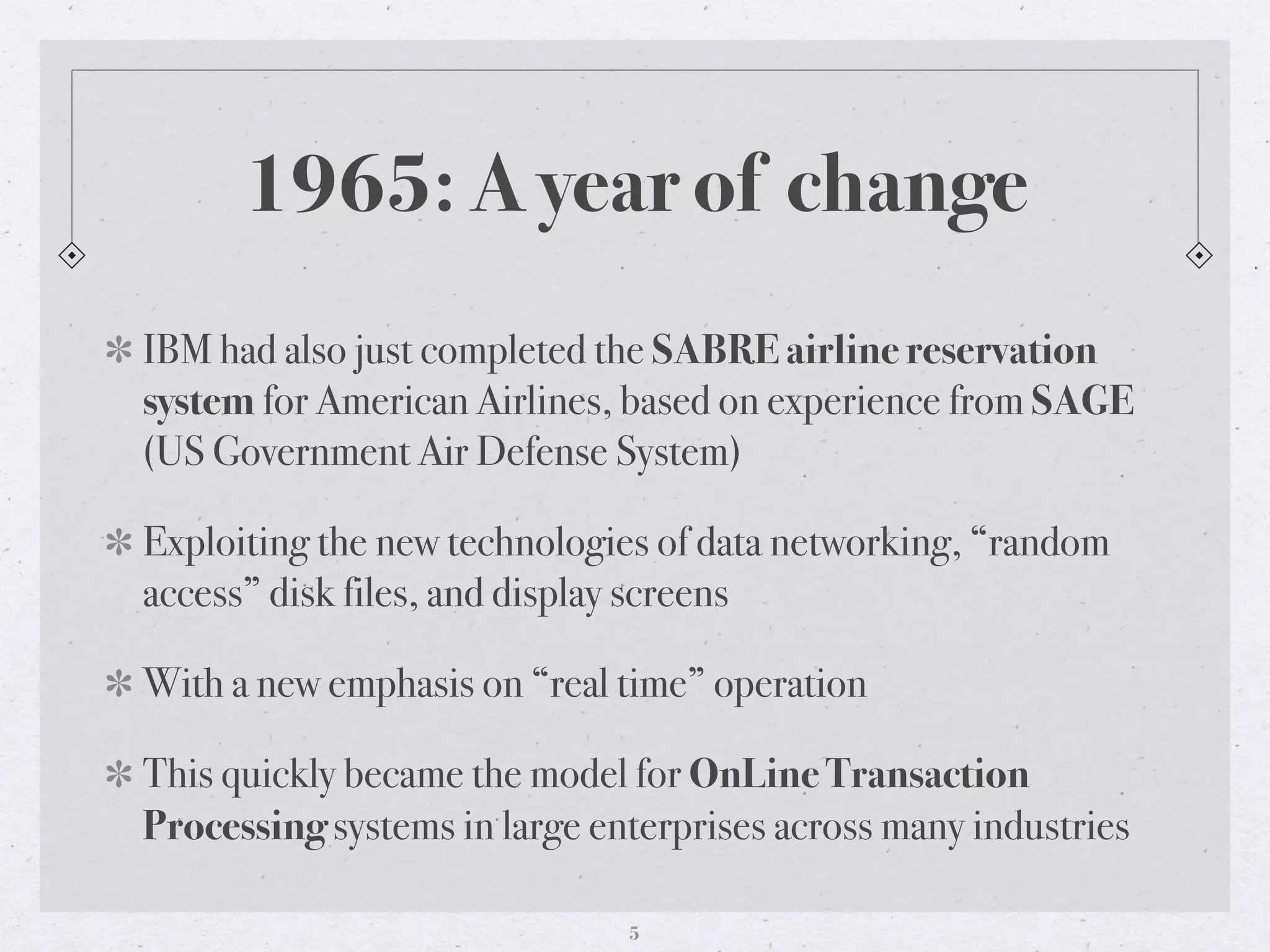
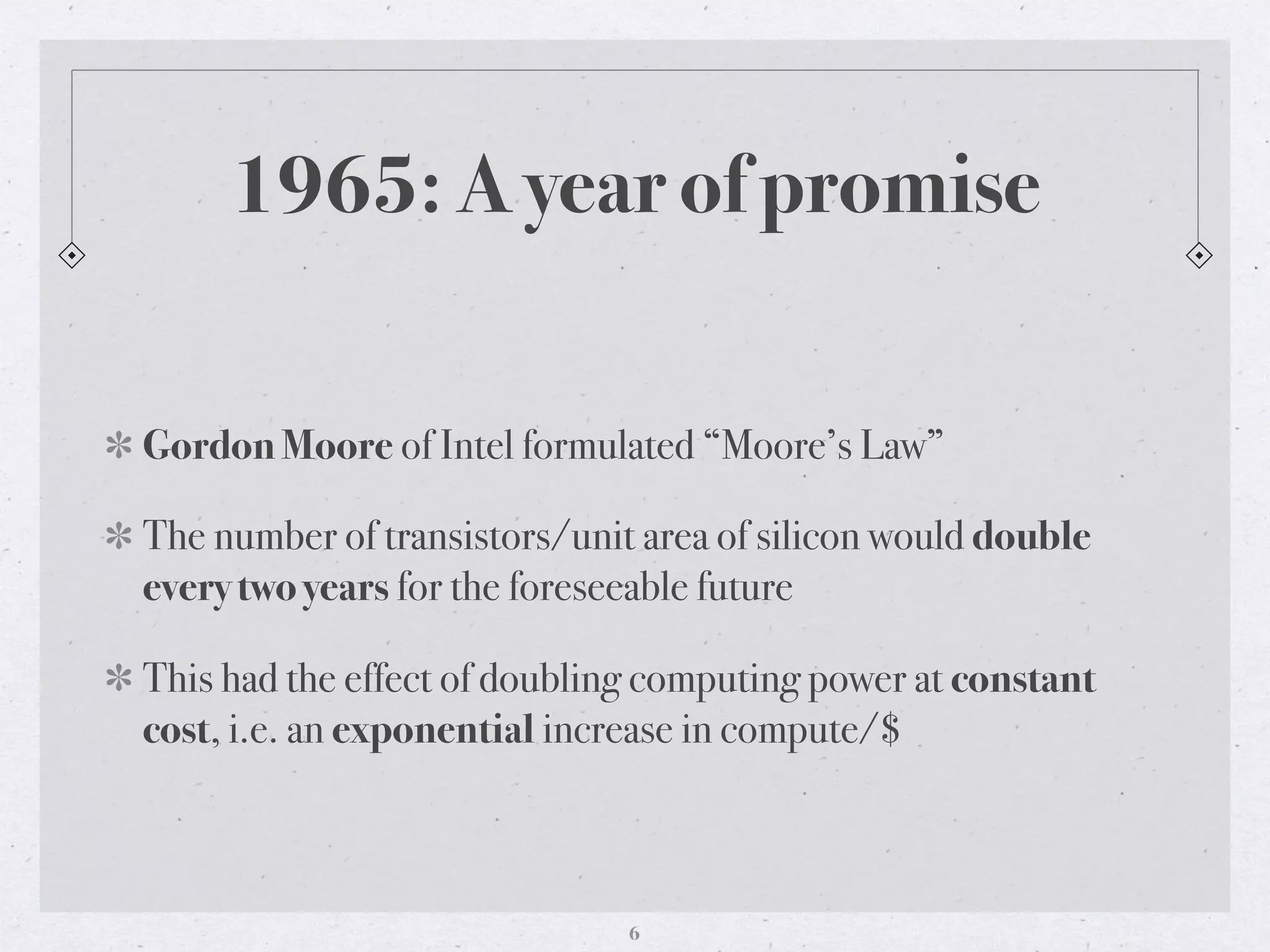

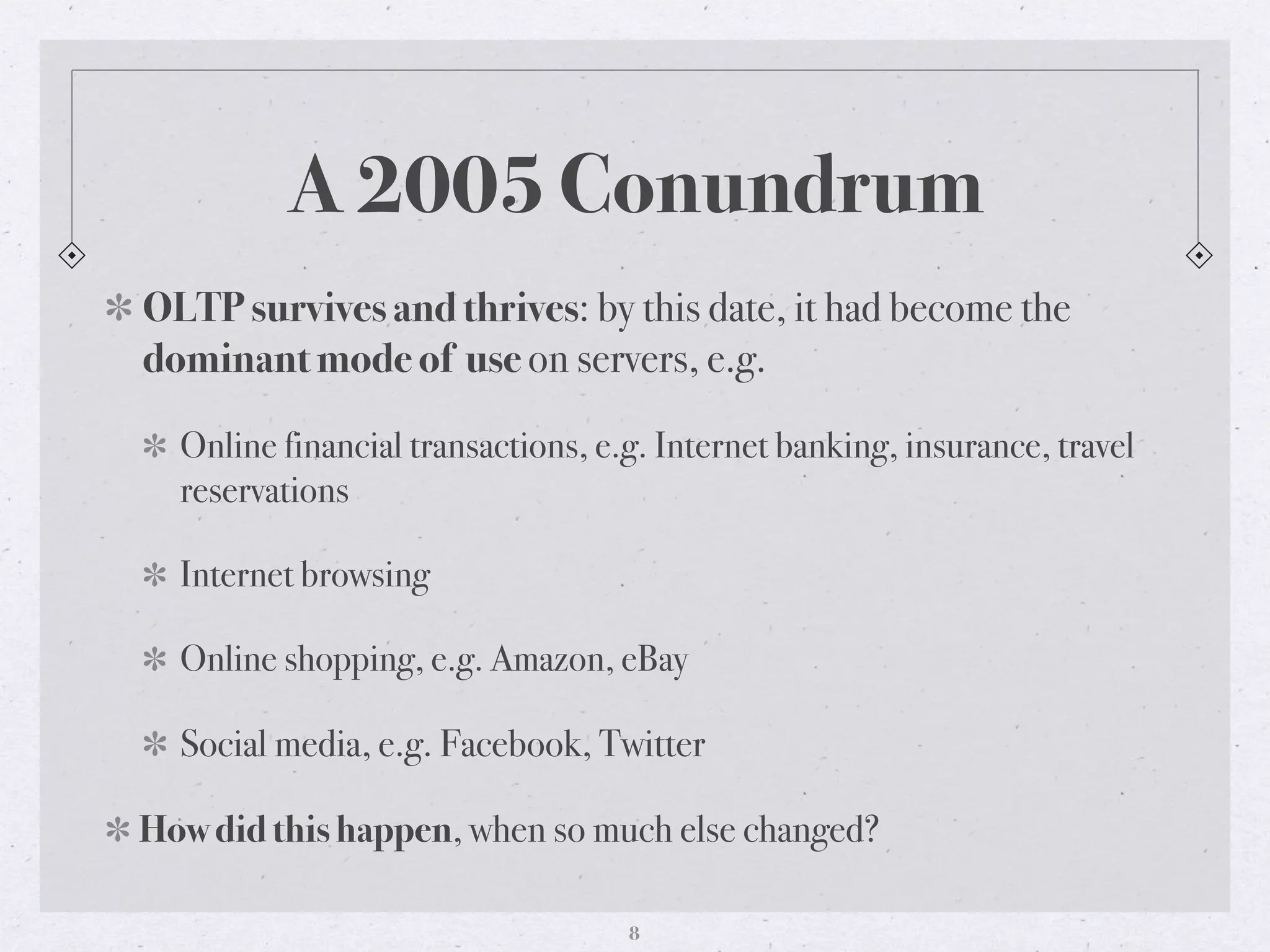
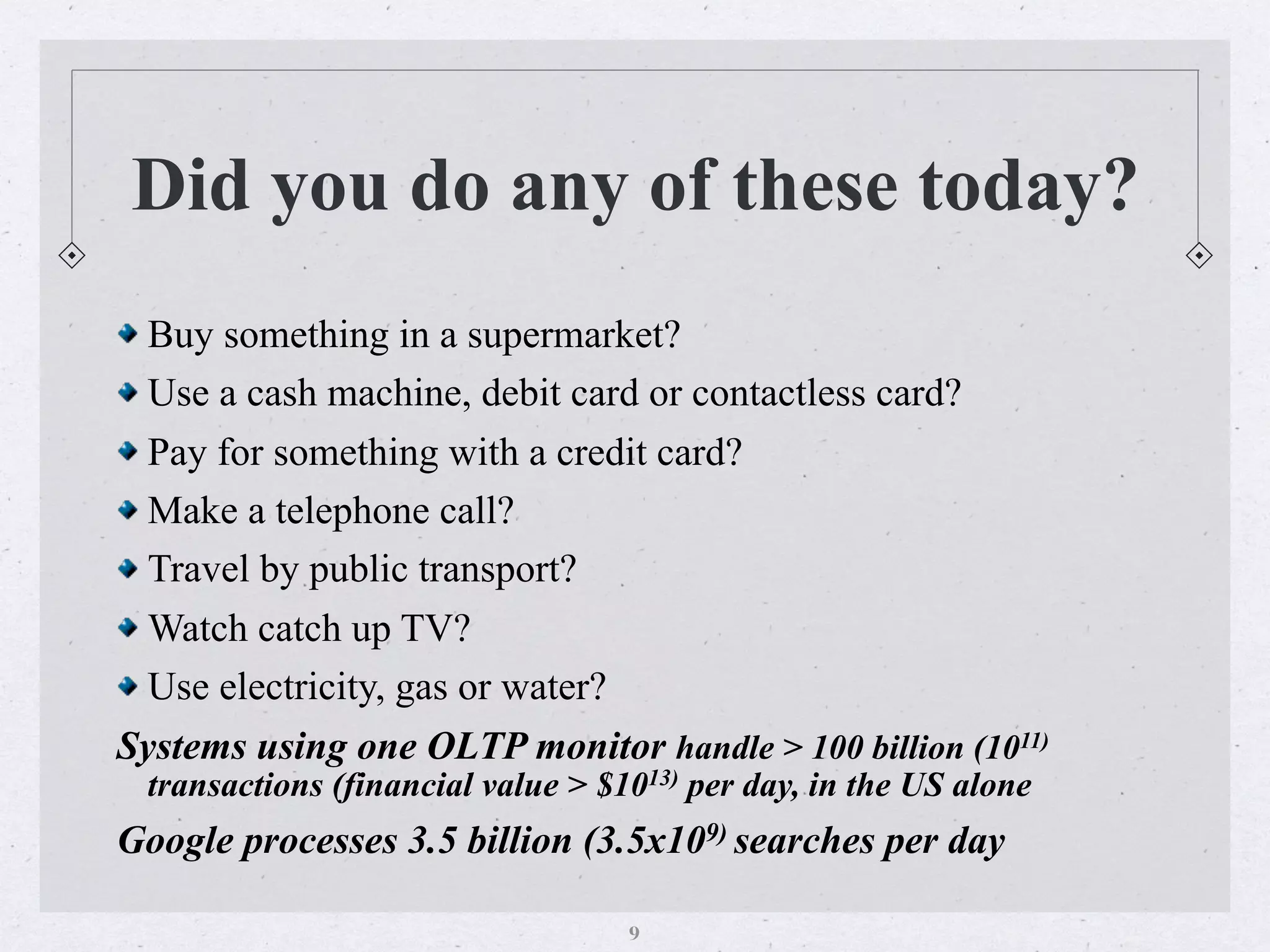
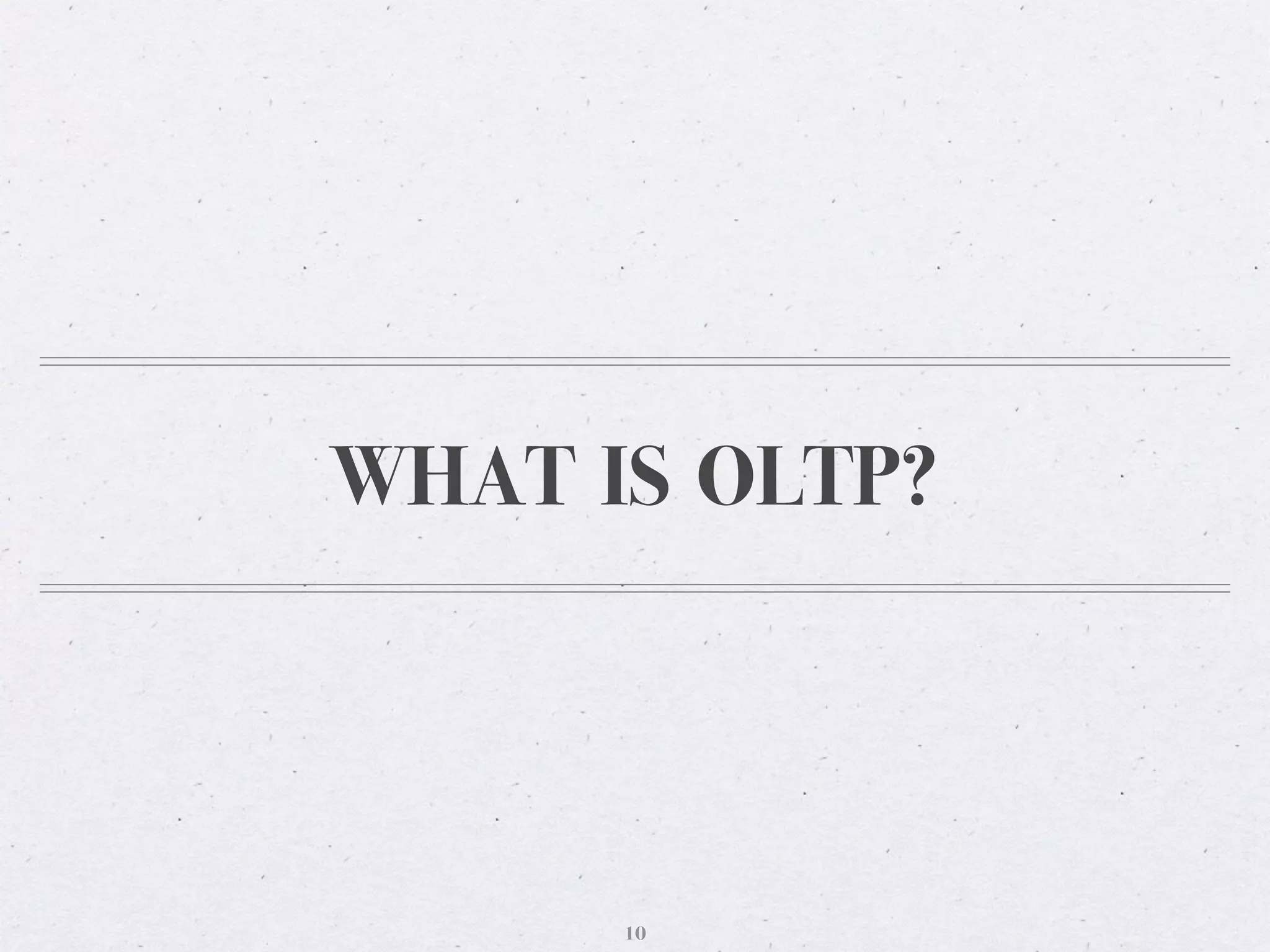
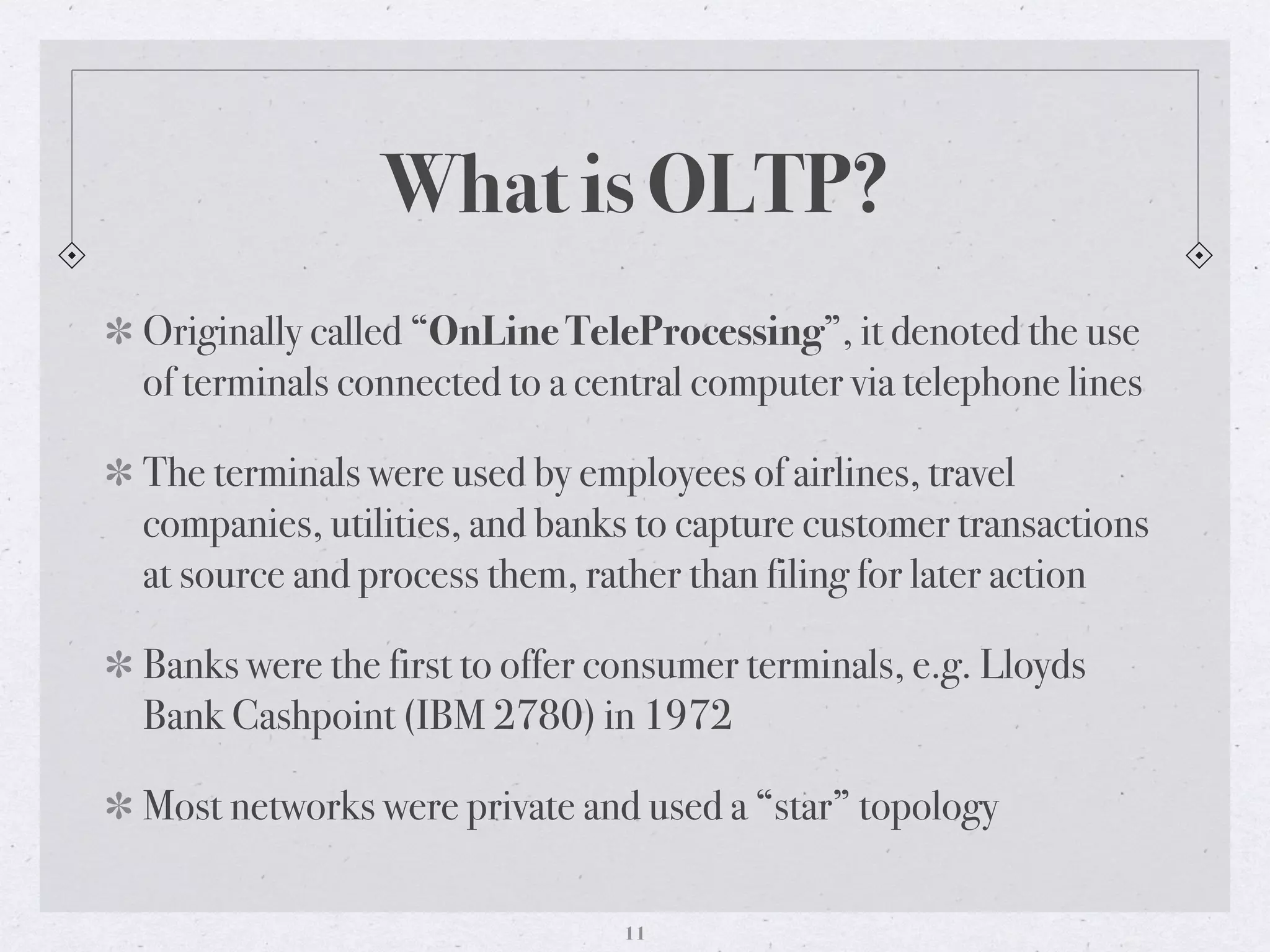
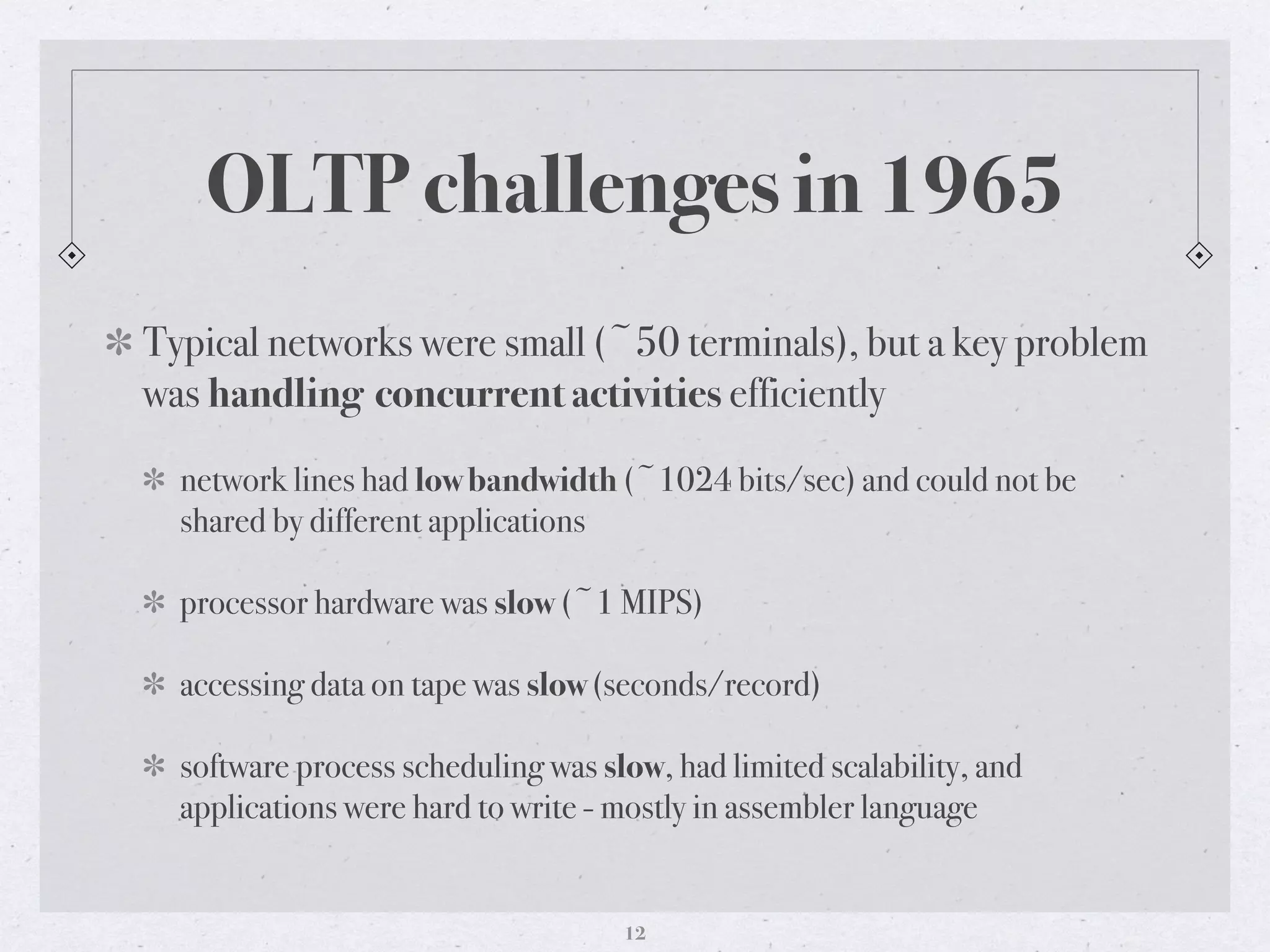
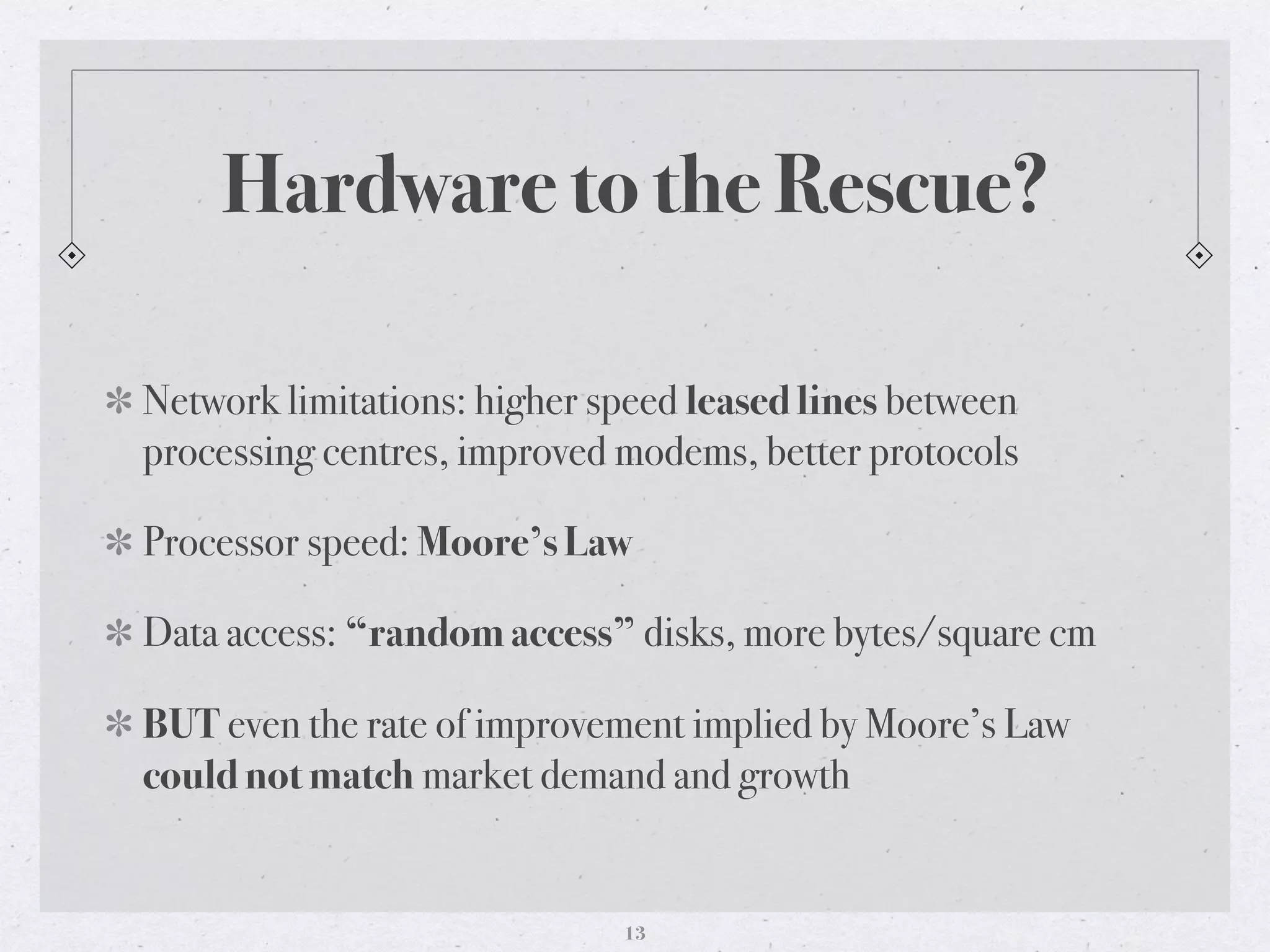
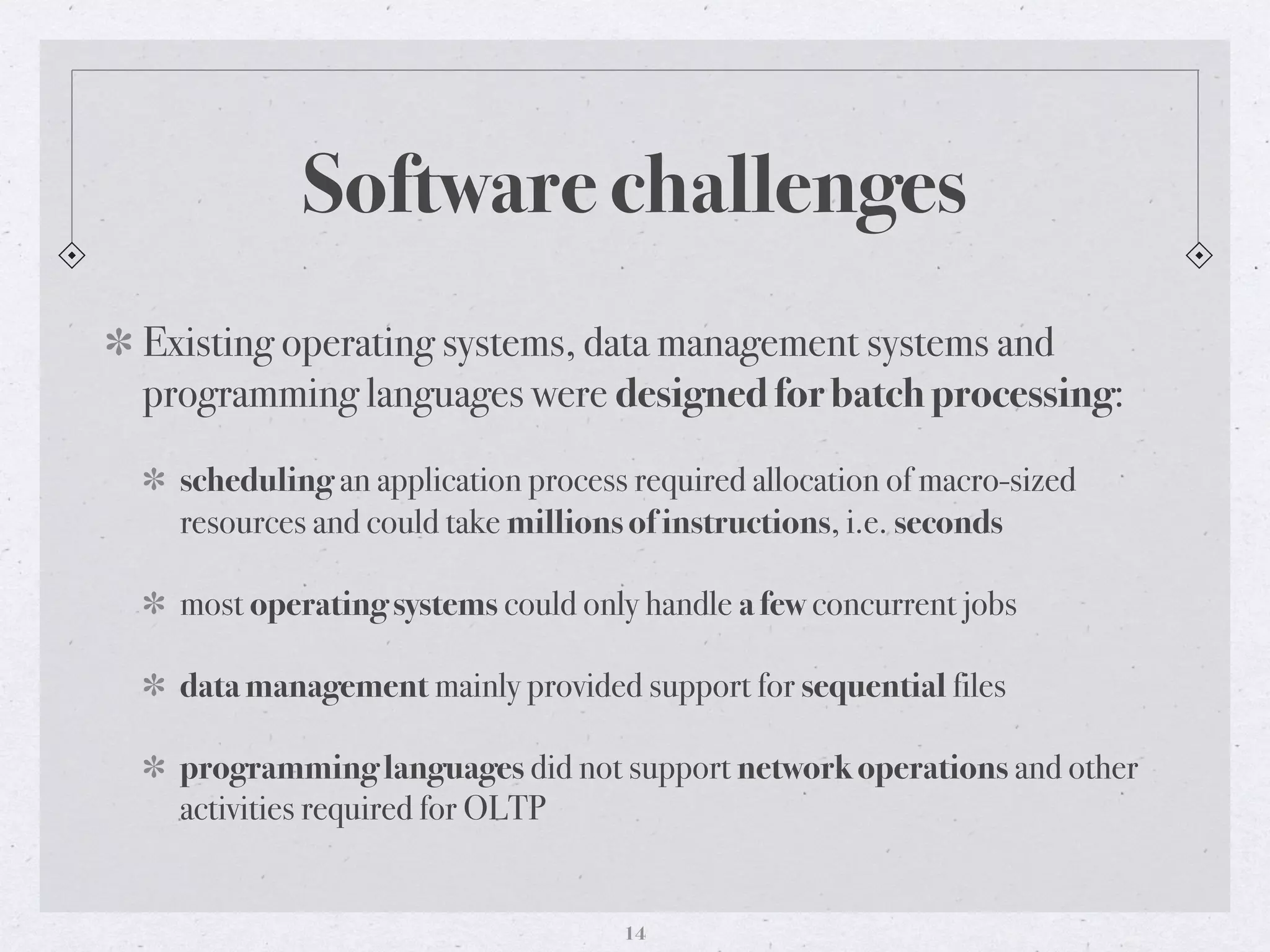
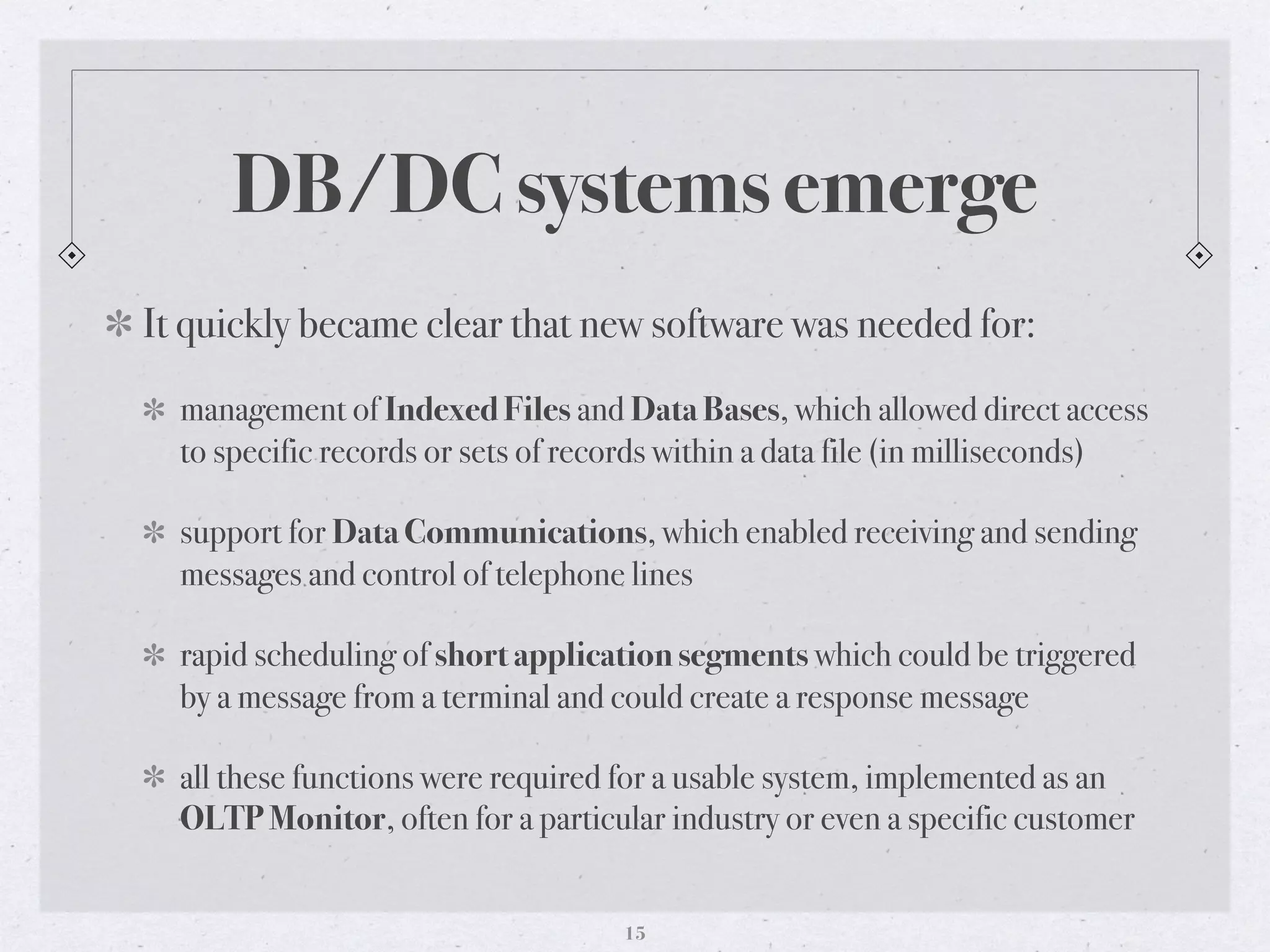
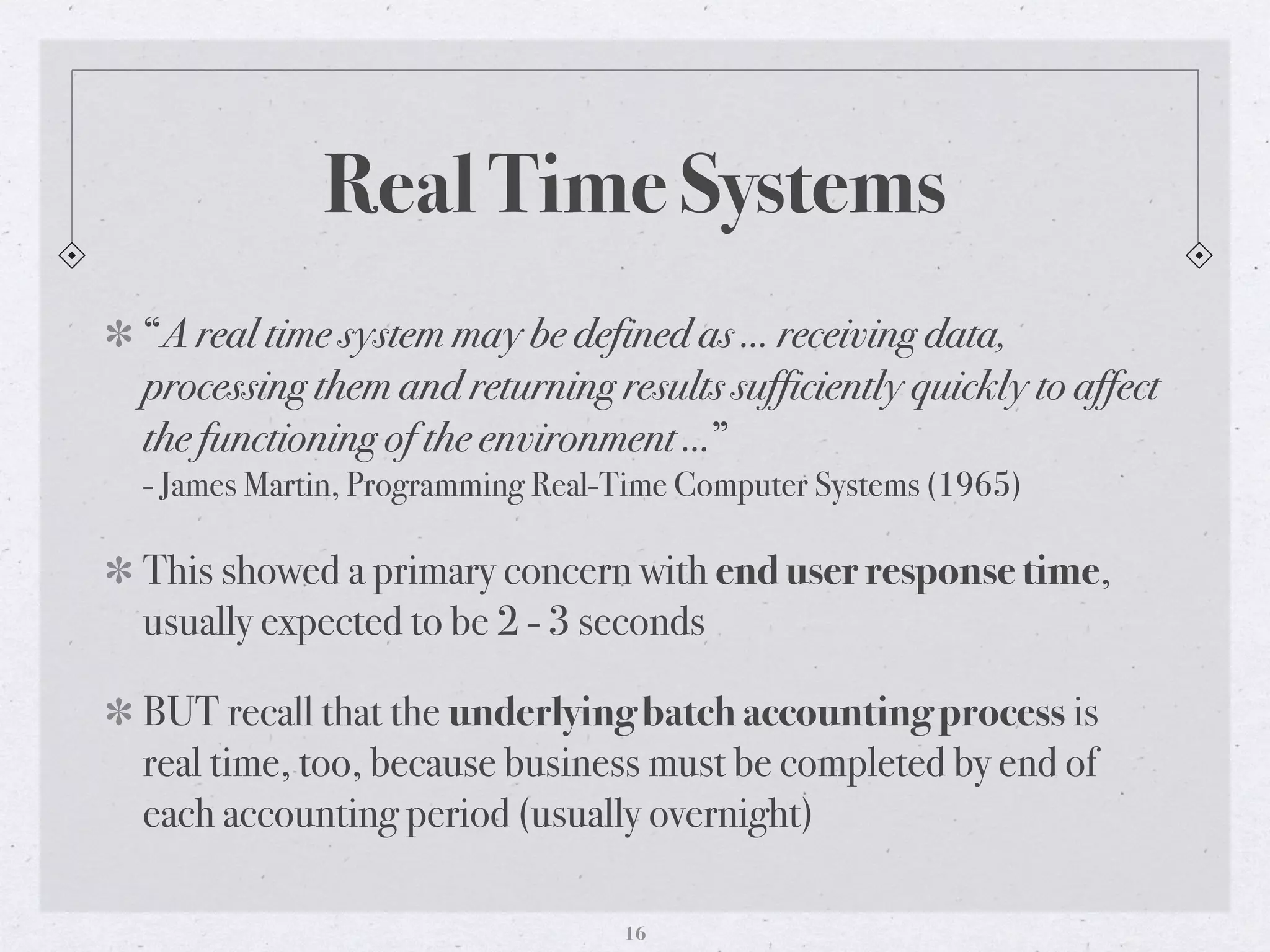
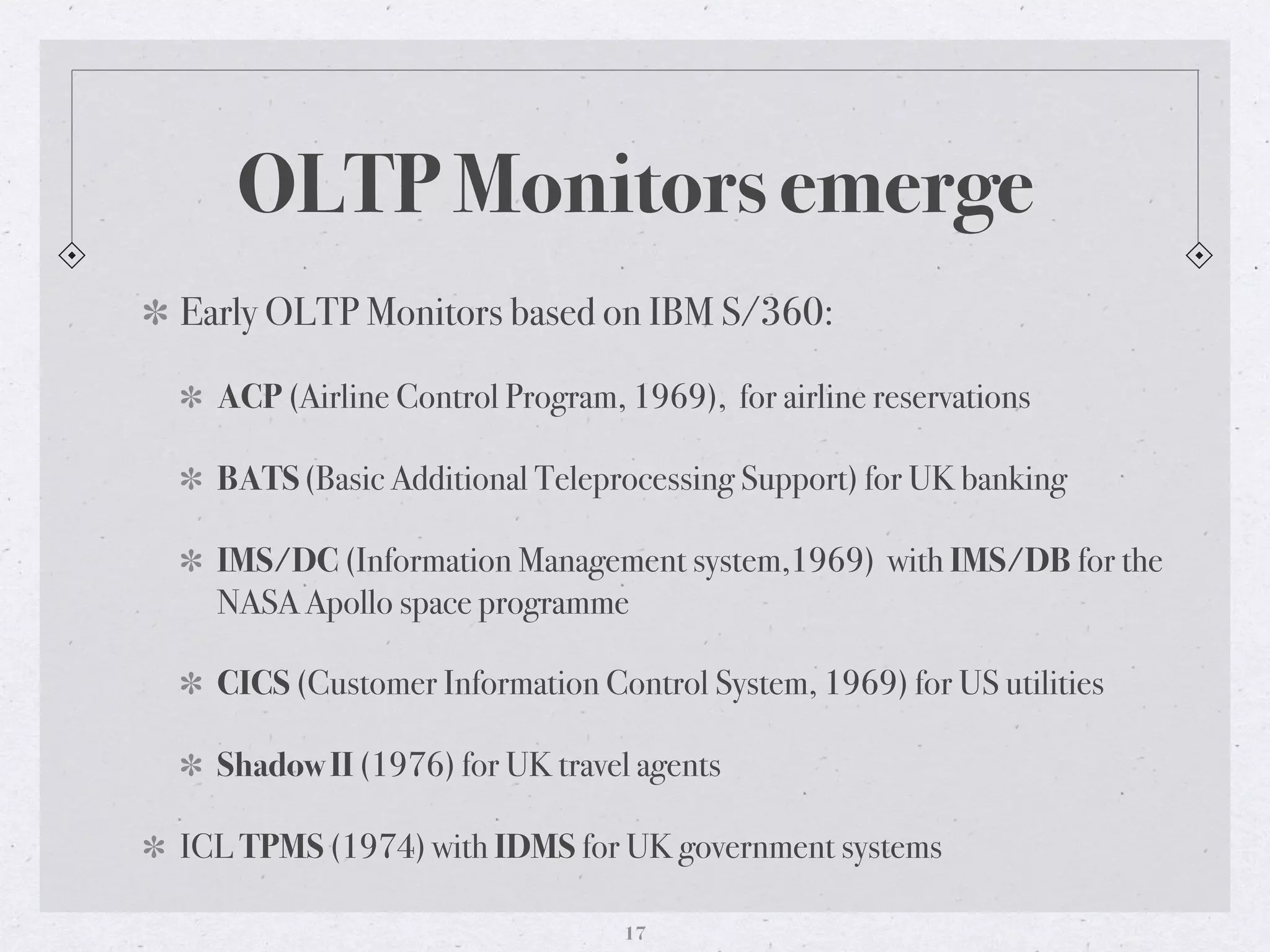
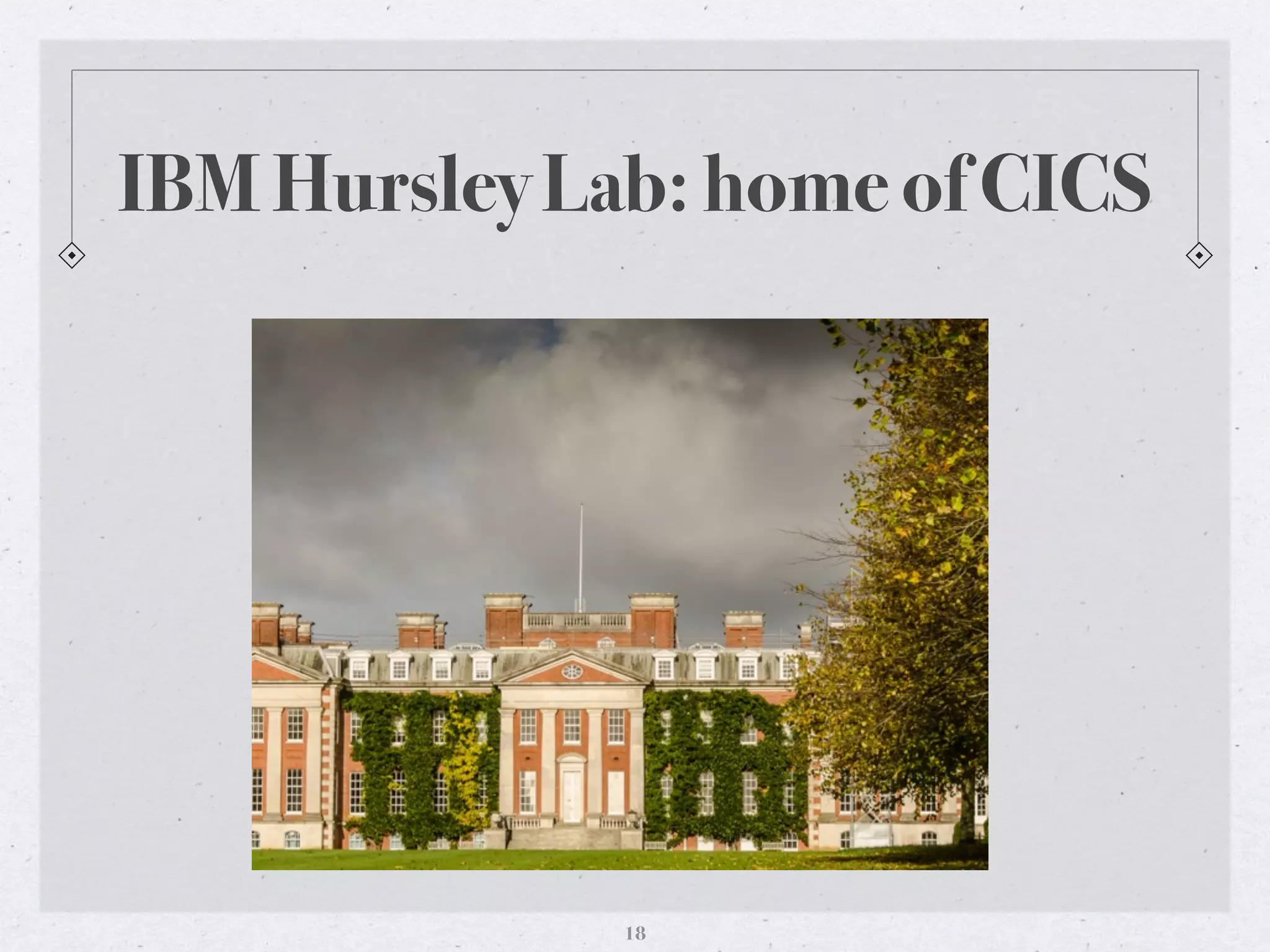
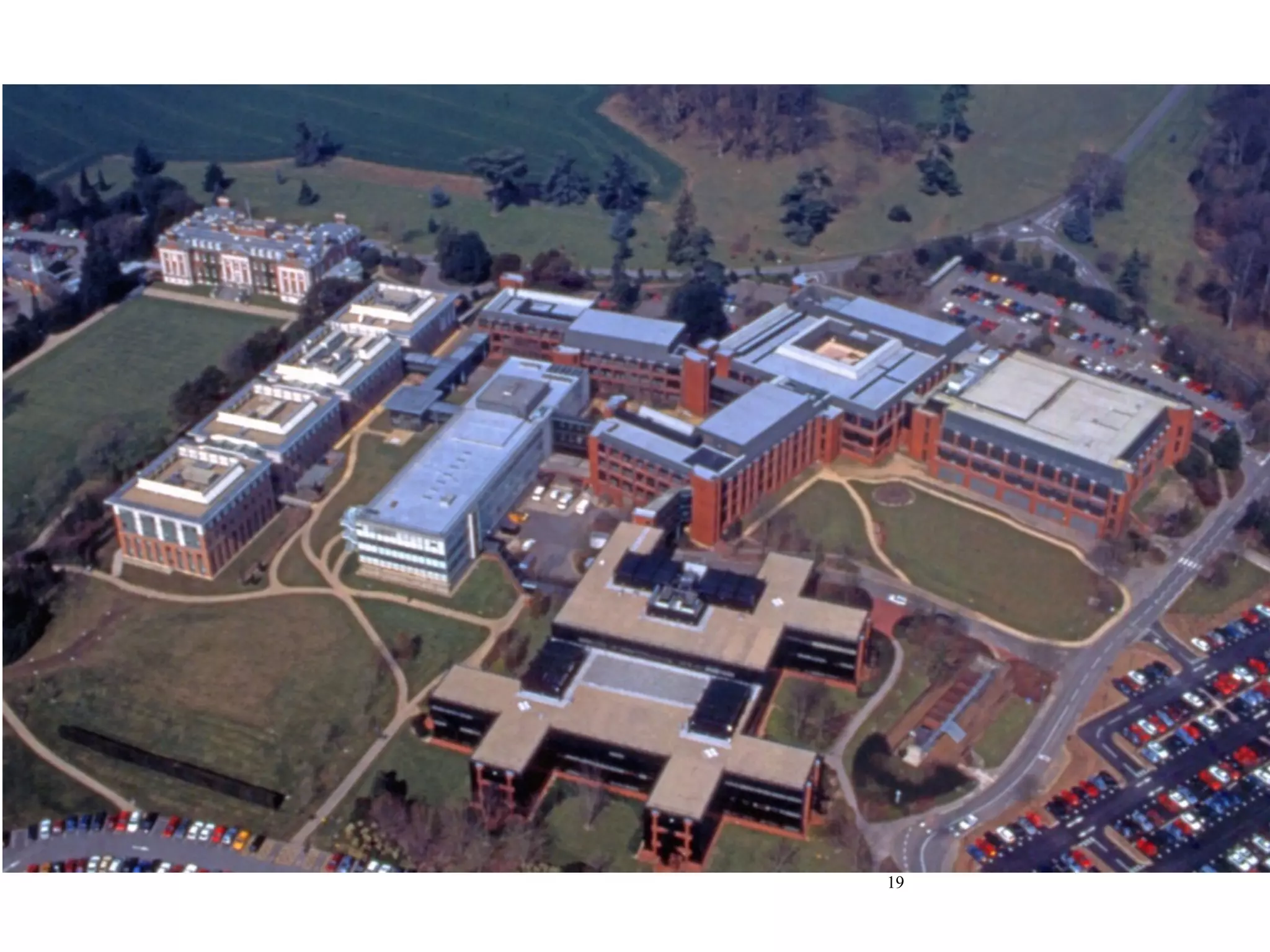

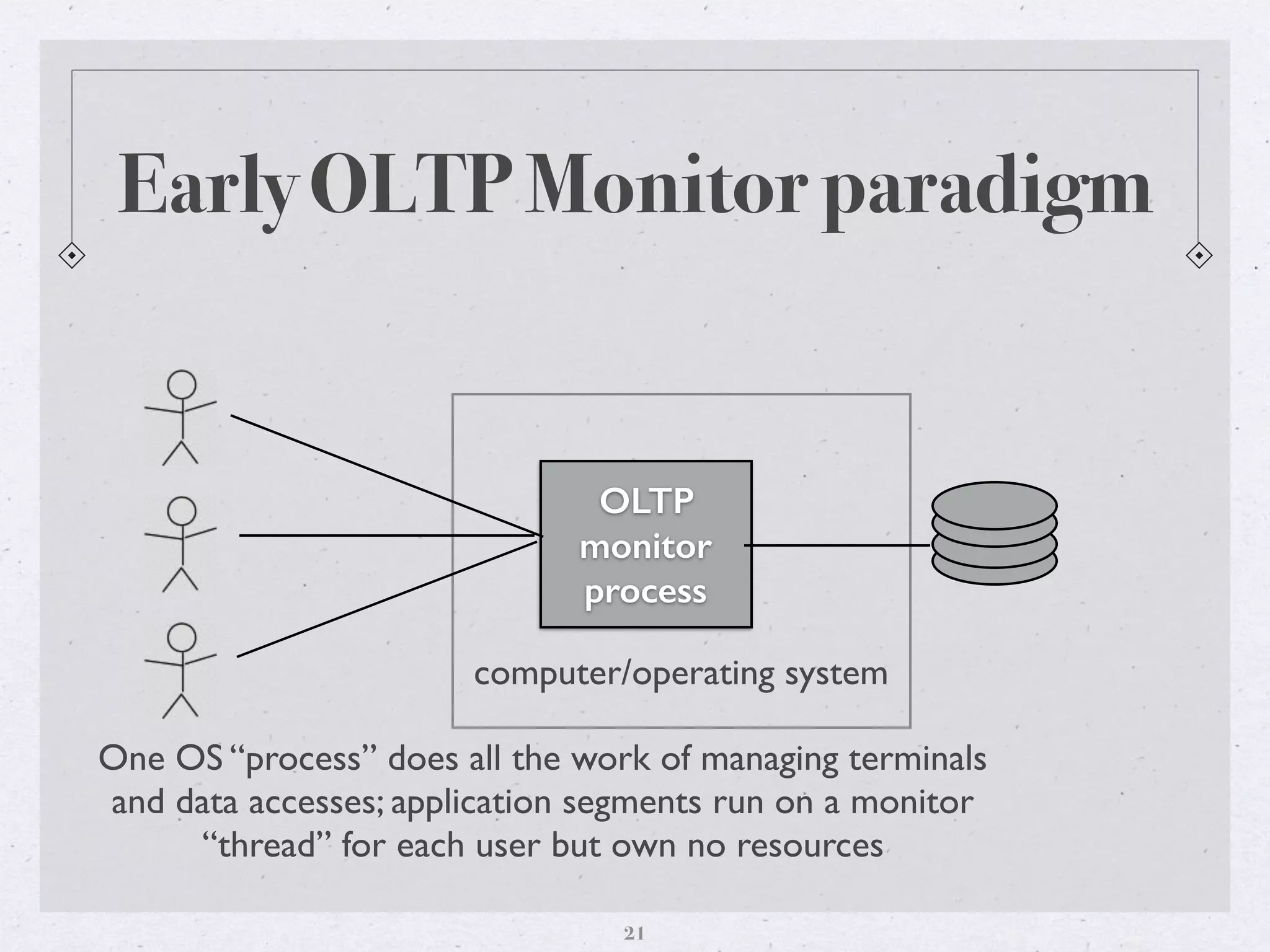
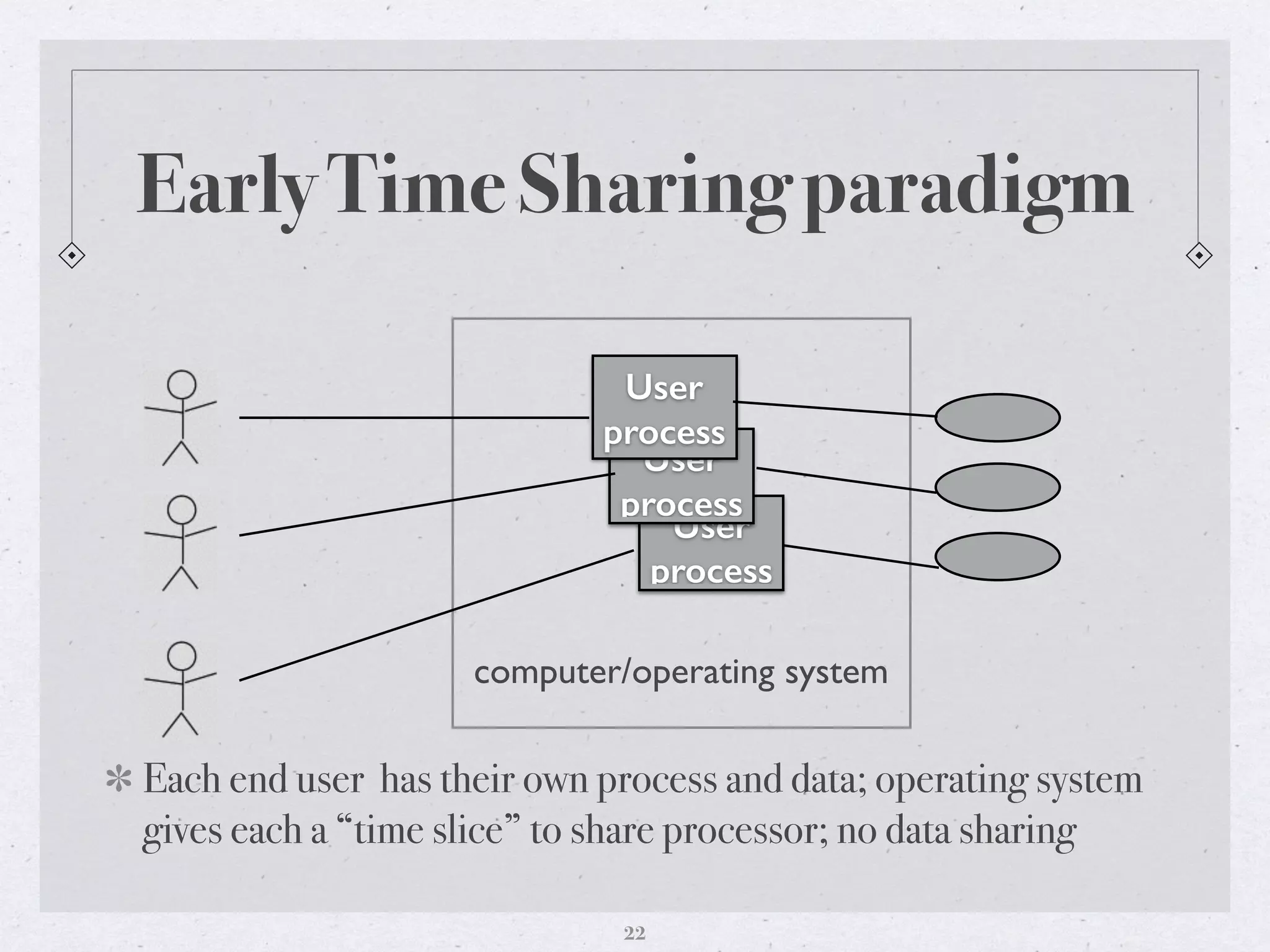
![Networking for OLTP
There was a clear need to shield “applications” from data link
control, traffic routing, and message assembly/disassembly
There was also a need to share the network between different
“applications” [where “application” means a class of customer
applications running under an OLTP monitor or subsystem]
This led IBM to develop SNA, a layered networking architecture
implemented by VTAM/370 and programmable devices
SNA became the model for OSI and other network architectures
23](https://image.slidesharecdn.com/ad7188d9-6a20-4da8-a69f-899c1c000ebd-170215144841/75/BCS-CCS-Enterprise-Systems-23-2048.jpg)
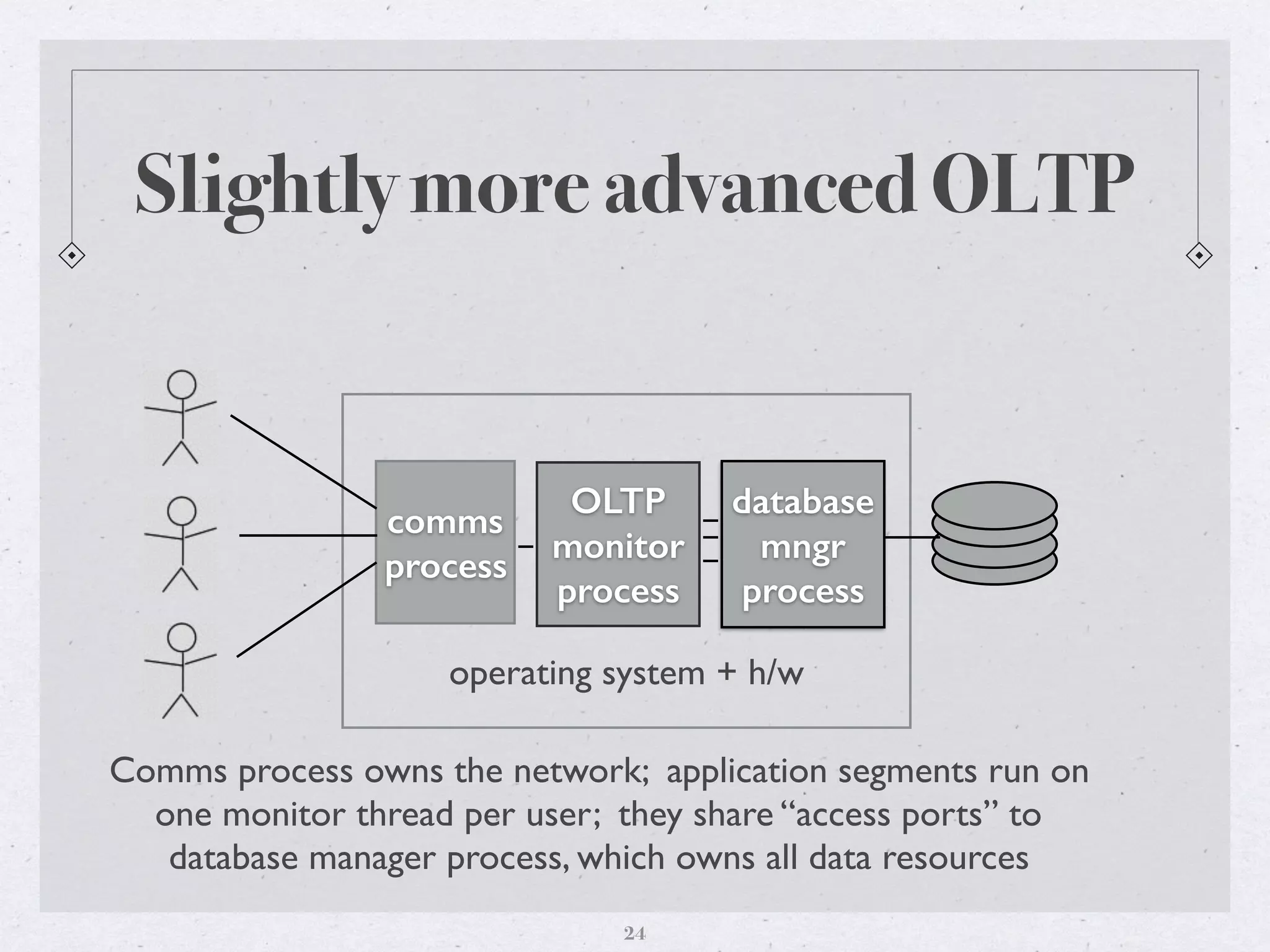
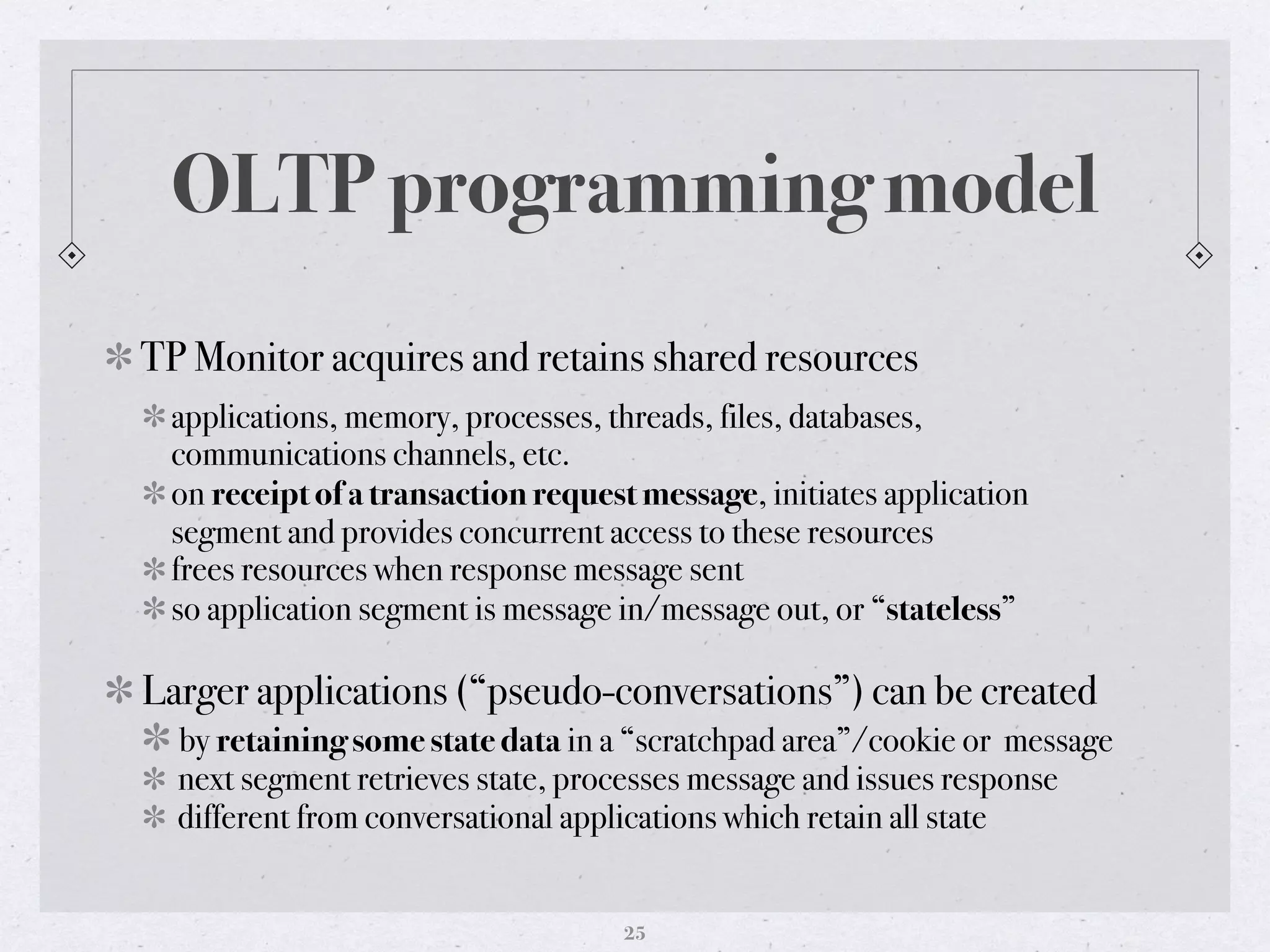
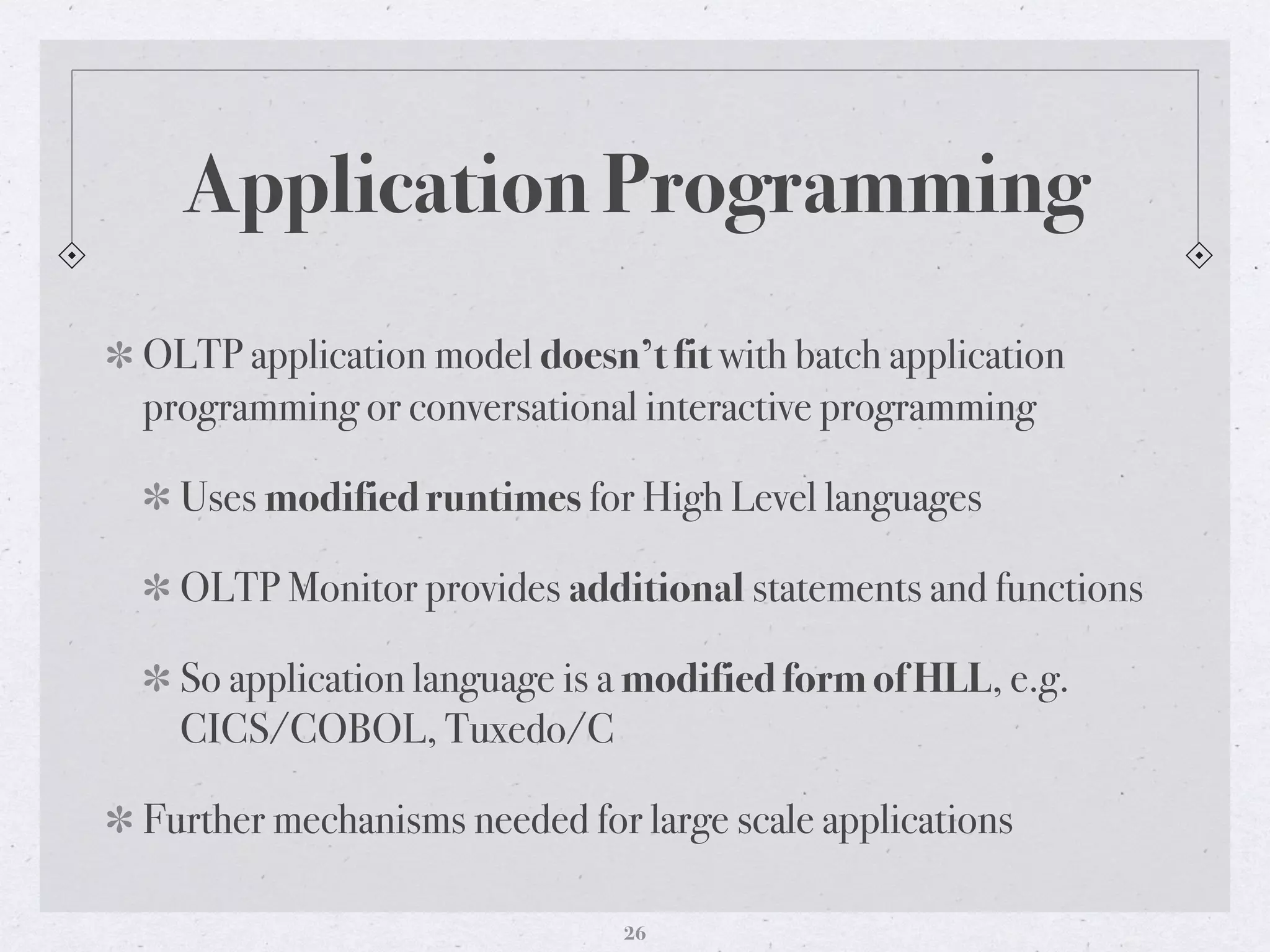

![Competition for mainframe TP
In the 1970s and 80s, mainframes were the de facto business
machines but other vendors saw opportunities to compete:
Mainframe compatible vendors, e.g. Amdahl, Fujitsu,
produced machines that were faster than IBM’s
Specialist vendors, e.g. Tandem, Stratus, produced highly
reliable [“non-stop”] machines for financial systems
Midrange vendors, e.g. DEC, HP, produced machines that
were cheaper for medium sized enterprises; many of these
used a hybrid Time Sharing paradigm with a DBMS
28](https://image.slidesharecdn.com/ad7188d9-6a20-4da8-a69f-899c1c000ebd-170215144841/75/BCS-CCS-Enterprise-Systems-28-2048.jpg)
